2021-01-07 - Nº 297
Editorial
Esta é a Newsletter Nº 297 que se apresenta com o mesmo formato que as anteriores. Se gostar da Newsletter partilhe-a!
Todas as Newsletters encontram-se indexadas no link.
Esta Newsletter tem os seguintes tópicos:
Faz hoje anos que nascia, em 1794, o químico alemão Eilhard Mitscherlich. Ele foi responsável por ter difundido o princípio do isomorfismo, após no início da sua carreira (por volta de 1820) descobriu a importância da semelhança da forma cristalina entre os compostos químicos. Ele começou a sua educação estudando medicina, mas o seu interesse mudou para a química e, em particular, a cristalografia. Ele trabalhou no laboratório de Berzelius (1820-22). Mitscherlich desenvolveu ainda mais a sua teoria do isomorfismo. Em 1834, ele destilou a seco o sal de cálcio do ácido benzóico para obter benzeno, entre outras pesquisas notáveis sobre os derivados do benzeno. Seguindo um interesse em geologia e mineralogia, ele produziu minerais artificiais. A indústria alemã de celulose cresceu a partir do processo Mitscherlich para extrair celulose da madeira.
Faz também hoje anos que nascia, em 1827, o topógrafo e engenheiro escocês Sandford Fleming. Ele emigrou aos 17 anos para Quebec, Canadá, em 24 de Abril de 1845, como agrimensor. Mais tarde, ele tornou-se um dos mais importantes engenheiros ferroviários do seu tempo. Enquanto era responsável pelo levantamento inicial da Canadian Pacific Railway, a primeira ferrovia canadiana a cruzar o continente, ele percebeu os problemas de coordenar uma ferrovia tão longa. Isso o levou à ideia de fusos horários, cuja contribuição para a adopção do actual sistema de fusos horários lhe rendeu o título de "Pai do Horário Padrão". Fleming também desenhou o primeiro selo postal canadiano. Lançado em 1851, custava três centavos e representava o castor, agora o animal nacional do Canadá.
Faz igualmente hoje anos que nascia, em 1871, o matemático francês Émile Borel. Ele, juntamente com René Baire e Henri Lebesgue, esteve entre os pioneiros da teoria da medida e sua aplicação à teoria da probabilidade. Num de seus livros sobre probabilidade, ele propôs a experiência de pensamento de que um macaco carregando em teclas ao acaso numa máquina de escrever irá - com certeza absoluta - escrever todos os livros da Bibliothèque nationale de France (Biblioteca Nacional) da França. Isto agora é popularmente conhecido como teorema do macaco infinito. Ele foi o primeiro a desenvolver (1899) uma teoria sistemática para uma série divergente. Ele também publicou (1921-27) uma série de artigos de pesquisa sobre a teoria dos jogos e se tornou o primeiro a definir jogos de estratégia.
Faz também hoje anos que nascia, em 1920, o industrial e inventor britânico Alastair Pilkington. Ele inventou o processo de vidro cristal "float", prático para a indústria, que substituiu o antigo método de fabricação de vidro plano. Ele desenvolveu a sua ideia em meados da década de 1950 e a anunciou ao público em 1959. Demorou três anos a mais para atingir uma produção consistente e lucrativa. Em 1962, o processo foi licenciado para uso nos EUA, seguido em breve pelo resto do mundo. O vidro plano com superfícies paralelas e brilhantes era fabricado a partir de uma fita contínua de vidro derretido saindo do forno e flutuando numa longa camada de estanho derretido. Nesta mesa, o vidro permanecia quente por tempo suficiente para que as irregularidades se alisassem, dispensando a necessidade de polimento posterior.
Por fim, faz hoje anos que nascia, em 1941, o químico britânico John E. Walker. Ele partilhou o Prémio Nobel de Química em 1997 pelo seu trabalho pioneiro sobre como a enzima ATP sintase catalisa a formação do composto de adenosina trifosfato de "alta energia" (ATP). Estas moléculas de ATP funcionam como portadoras de energia em todos os organismos vivos, sejam bactérias simples, fungos ou plantas, ou ainda em animais superiores e humanos. O ATP absorve a energia química libertada quando os nutrientes são metabolizados e transporta essa energia para as várias reacções que requerem energia. Estas reacções incluem a construção de células, a contracção das fibras musculares ou sinais nervosos.
E nesta primeira semana de 2021 ficamos a saber os trabalhos para a ligação via cabo submarino da EllaLink entre a América do Sul e Portugal foram concluídos. O cabo de fibra óptica de última geração que liga Portugal à América Latina já chegou a Sines. O sistema deverá estar totalmente operacional no segundo trimestre de 2021, tornando Portugal a nova porta de acesso à Europa para um nível de conectividade internacional sem precedentes. Ao criar a rota directa mais curta entre a Europa e a América Latina, evitando a passagem por países terceiros, a EllaLink reduz a latência em 50% em relação à infraestrutura actual, atingindo um valor real inferior a 60ms entre Portugal e o Brasil.
Também nesta semana um estudo revelou que os 28 dias mais rápidos (curtos) de que há registo desde 1960 ocorreram todos em 2020. Isto significa que a Terra está a girar a um velocidade superior ao normal. Se esta circunstância não é alarmante, porque o planeta, devido a diversos fenómenos físicos, varia ligeiramente o tempo total de rotação, é no entanto uma preocupação para o alinhamento com os sistemas de manutenção de tempo que se baseiam nos sistemas que usam os ultra-precisos relógios atómicos. Até agora, estes ajustes consistiam em adicionar um "segundo de salto" ao ano no final de Junho ou Dezembro, colocando o tempo astronómico e o tempo atómico de volta à sintonia. Esses segundos de salto foram acrescentados porque a tendência geral da rotação da Terra tem diminuído desde o início da medição precisa dos satélites no final dos anos 1960 e início dos anos 1970. Desde 1972, os cientistas adicionaram segundos de salto a cada ano e meio, em média, de acordo com o NIST. A última adição foi em 2016, quando na véspera de Ano Novo às 23 horas, 59 minutos e 59 segundos, um "segundo de salto" extra foi adicionado. No entanto, de acordo com a Time and Date, a recente aceleração na rotação da Terra fez com que os cientistas falassem pela primeira vez sobre um segundo de salto negativo. Em vez de adicionar um segundo, eles podem precisar de subtrair um. Isto porque a duração média de um dia é de 86.400 segundos, mas um dia astronómico em 2021 será 0,05 milissegundos mais curto, em média. Ao longo do ano, isso representará um atraso de 19 milissegundos no tempo atómico.
Na Newsletter desta semana apresentamos diversas noticias, artigos científicos assim como projetos de maker.
Aproveito para desejar a todos um excelente 2021.
 João Alves ([email protected])
João Alves ([email protected])
O conteúdo da Newsletter encontra-se sob a licença  Creative Commons Attribution-NonCommercial-ShareAlike 4.0 International License.
Creative Commons Attribution-NonCommercial-ShareAlike 4.0 International License.
Novidades da Semana

EllaLink’s transatlantic submarine cable has already anchored in Portugal
"The state-of-the-art fiber optic cable that connects Portugal and Latin America has already arrived in Sines. The system should be fully operational in the second quarter of 2021, making Portugal the new gateway to Europe to an unprecedented level of international connectivity. EllaLink announces today that its next generation low-latency submarine cable system has already anchored in Sines, from where the connection to Latin America will be established. It is expected to become fully operational in the second quarter of this year, providing an unprecedented level of international connectivity between the two continents, which will reach Europe through Portugal. With this operation with an investment of 150 million euros, pointed out as one of the big bets for the Portuguese Presidency of the European Commission, EllaLink will open a “corridor” for the transmission of data between the two continents, providing new opportunities to the European market. In addition to the first direct high-speed submarine cable connection between Europe and Latin America, the EllaLink system also includes several land routes that link strategic Data Centers in Lisbon, Madrid, Marseille, São Paulo, Rio de Janeiro and Fortaleza in partnership with Equinix and Interxion." [...]

Earth is whipping around quicker than it has in a half-century
"It could mean a "negative" leap second. Even time did not escape 2020 unscathed. The 28 fastest days on record (since 1960) all occurred in 2020, with Earth completing its revolutions around its axis milliseconds quicker than average. That's not particularly alarming — the planet's rotation varies slightly all the time, driven by variations in atmospheric pressure, winds, ocean currents and the movement of the core. But it is inconvenient for international timekeepers, who use ultra-accurate atomic clocks to meter out the Coordinated Universal Time (UTC) by which everyone sets their clocks. When astronomical time, set by the time it takes the Earth to make one full rotation, deviates from UTC by more than 0.4 seconds, UTC gets an adjustment." [...]
Outras Notícias

Renesas Unveils Industry’s First 60W Wireless Power Receiver IC
"Single-Chip P9418 IC Combines WattShare Technology, Best Thermal Performance, and Best-in-Class Current Sense Accuracy in the Highest Power Density Solution for Smartphone and Mobile Device Charging Renesas Electronics Corporation (TSE:6723), a premier supplier of advanced semiconductor solutions, today introduced the world’s first 60W wireless power receiver, the P9418, to deliver faster wireless charging experiences for smartphones, laptops and notebook devices in the industry’s highest power density solution. Featuring Renesas’ exclusive WattShare™ technology, the highly integrated P9418 wireless power receiver delivers up to 60W of power in a single chip. This enables quick and convenient charging on the go beyond smartphones, including device charging for a variety of portable computing devices. “The P9418 is the latest first-to-market example of our fast wireless charging technology, and we are proud to continue leading the way to convenient and cost-effective wireless charging for a range of mobile devices with our robust, safe and field programmable wireless power solutions,” said Dr. Amit Bavisi, Vice President of Wireless Power Group, Mobility Infrastructure and IoT Power Business Division at Renesas. “With our broad portfolio of scalable wireless power solutions, we are excited to be part of transforming the charging experience for a wide variety of battery-powered applications.” Based on Renesas’ proprietary WattShare technology, the P9418 is a highly-integrated single-chip wireless power transmitter/receiver IC (TRx) that can be configured to transmit or receive an AC power signal through magnetic induction. The P9418 builds on the proven P9415 wireless power receiver and provides an easy upgrade path for existing customers." [...]
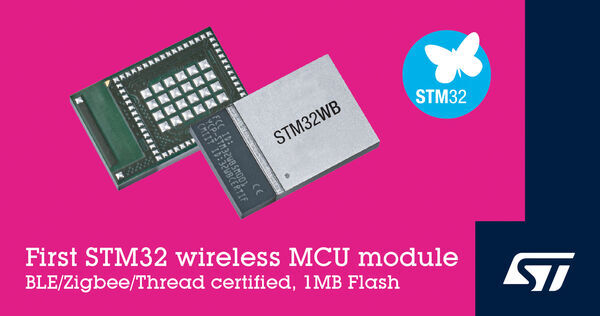
STMicroelectronics Boosts IoT Design Productivity with First STM32 Wireless Microcontroller Module
"STMicroelectronics, a global semiconductor leader serving customers across the spectrum of electronics applications, is offering a solution to accelerate the market introduction of new Bluetooth® LE and 802.15.4 based IoT devices with a miniature, ready-to-use STM32 wireless microcontroller (MCU) module. The 7mm x 11.3mm STM32WB5MMG module lets product teams build connected devices without needing wireless-design skills. Made to enable low-cost PCB technology requiring a minimal number of layers, it integrates everything up to the antenna. Users can also leverage the tools, design wizards, radio stacks, and turnkey software libraries of ST’s STM32Cube MCU development ecosystem, available free of charge, to complete the project quickly and efficiently. In addition, the module supports ST’s novel concurrent dual-protocol mode that lets any protocol based on IEEE 802.15.4 radio technology, including Zigbee 3.0 and OpenThread, connect the user directly to any Bluetooth Low Energy device. Benefitting from all features of ST’s STM32WB55 ultra-low power wireless microcontroller ICs, the module addresses a wide variety of opportunities for smart-home, smart-building, and smart-factory equipment." [...]
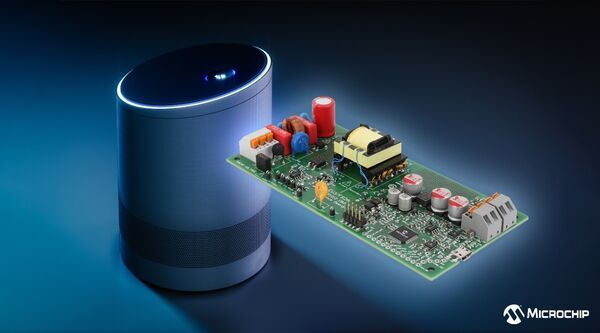
Power Control Reference Design Enables a Secondary Side Microcontroller to Control Primary Power
"New AC-DC controller plus Inde-Flux™ transformer technology licensed to Würth Elektronik eiSos simplifies design, reducing size and cost In modern offline AC-DC power solutions, programmability and adaptive control offer the flexibility and intelligence needed by smart home devices to better interface with their power systems. In these systems, a secondary side microcontroller (MCU) is typically not capable of starting a system without the use of a separate bias power supply. A new reference design from Microchip Technology Inc. (Nasdaq: MCHP) solves this problem using the MCP1012 high voltage auxiliary AC-DC controller, demonstrating the ability to remove the independent bias power supply in many applications. The MCP1012 offline auxiliary device enables the system to transfer control of the power and duty cycle to a secondary MCU. The control between the system and the load can be more precise and purposefully coupled, through a design that can be simplified, reducing size and cost. The reference design uses a patented isolation technique for isolated feedback." [...]
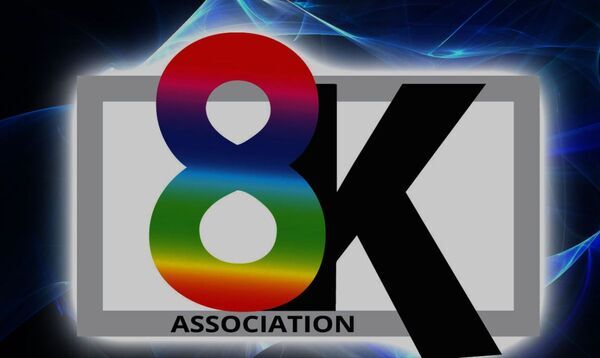
8K Association Strengthens Performance Specification for 8K Televisions
"The 8K Association (8KA), the cross-industry group dedicated to promoting the growth of the 8K ecosystem, has published an updated performance specification for the 8K Association Certified mark program. TV shoppers looking for televisions which offer four times the resolution of 4K TVs and meet the high-performance standards of the 8K Association Certified program will benefit from the newly adopted broader performance requirements applied to 8K TVs launching in the market starting this year. In addition to the existing requirements for resolution, luminance, color and connectivity standards that ensure powerful big-screen performance, the 8K Association Certified logo program now recognizes a broader set of video decoding standards that will promote the wider availability of 8K streaming content. In addition, the updated requirements ensure that 8K TVs enable access to advanced multi-dimensional surround sound formats for a truly immersive home theater experience. “During this difficult time when a communal movie theater experience is not possible for many, the availability of big-screen TVs with super-sharp 8K resolution offers an alternative cinematic option at home,” said Dan Schinasi, Director of Product Planning at Samsung Electronics America. “With the 8K Association’s support in promoting standards that include audio-video performance and interface standards, we expect that more homes will choose 8K TVs and more 8K content will be soon available in those homes in the year ahead, offering an exceptional home theater experience.” In addition to the 8KA’s updated performance standard for TVs, the organization expects to promote the growth of the 8K ecosystem with a focus on educating video content creators on the benefits of capturing, producing and distributing video in 8K resolution." [...]
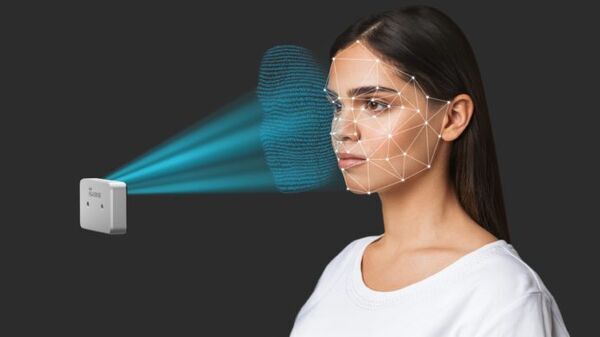
Introducing Intel RealSense ID Facial Authentication
"Today, Intel introduced Intel® RealSense™ ID, an on-device solution that combines an active depth sensor with a specialized neural network designed to deliver secure, accurate and user-aware facial authentication. Intel RealSense ID works with smart locks, access control, point-of-sale, ATMs, kiosks and more. “Intel RealSense ID combines purpose-built hardware and software with a dedicated neural network designed to deliver a secure facial authentication platform that users can trust.” –Sagi Ben Moshe, Intel corporate vice president and general manager of Emerging Growth and Incubation How It Works: With an easy enrollment process and no network setup needed, Intel RealSense ID brings a highly accurate, natural solution that simplifies secure entry. Using only a glance, users are able to quickly unlock what’s important to them. Intel RealSense ID combines active depth with a specialized neural network, a dedicated system-on-chip and embedded secure element to encrypt and process user data quickly and safely. To ensure continued ease of use, Intel RealSense ID also adapts to users over time as they change physical features, such as facial hair and glasses." [...]

Space Station, Cygnus Test Technology for 5G Communications, Other Benefits
"A Northrop Grumman Cygnus supply craft carried a load of new scientific experiments to the International Space Station in early October. That is only one of the jobs the craft has, though. Once it undocks from the station Cygnus will continue operations by hosting a two-week test of emerging technologies known as SharkSat. Developed internally at Northrop Grumman, SharkSat is just one example of the wide variety of technology demonstrations supported by the space station for the benefit of space exploration and people on Earth. SharkSat will collect on-board telemetry - or measurements and other digital information - and relay it back to the ground for analysis, says David Schiller, who served as a principal investigator for SharkSat. “In this case, the telemetry data will provide insight into the health and functioning of the electronic components of SharkSat.” Those components are targeted toward development of a Ka-Band software defined radio (SDR)." [...]
Ciência e Tecnologia
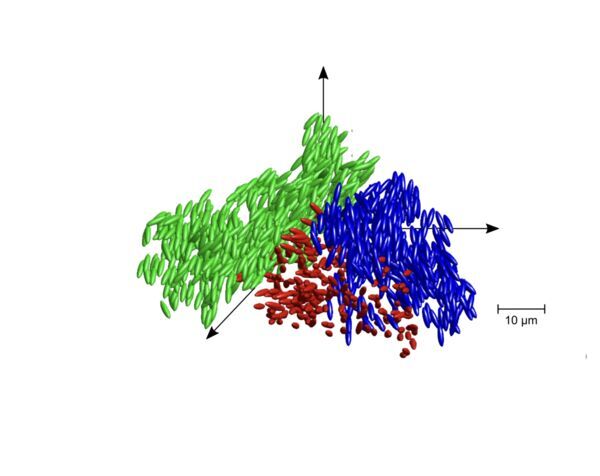
Neither liquid nor solid
"Discovery of liquid glass sheds light on the old scientific problem of the glass transition: An interdisciplinary team of researchers from the University of Konstanz has uncovered a new state of matter, liquid glass, with previously unknown structural elements – new insights into the nature of glass and its transitions. While glass is a truly ubiquitous material that we use on a daily basis, it also represents a major scientific conundrum. Contrary to what one might expect, the true nature of glass remains something of a mystery, with scientific inquiry into its chemical and physical properties still underway. In chemistry and physics, the term glass itself is a mutable concept: It includes the substance we know as window glass, but it may also refer to a range of other materials with properties that can be explained by reference to glass-like behaviour, including, for instance, metals, plastics, proteins, and even biological cells. While it may give the impression, glass is anything but conventionally solid. Typically, when a material transitions from a liquid to a solid state the molecules line up to form a crystal pattern." [...]

Emory chemists invent shape-shifting nanomaterial
"Chemists have developed a nanomaterial that they can trigger to shape shift — from flat sheets to tubes and back to sheets again — in a controllable fashion. The Journal of the American Chemical Society published a description of the nanomaterial, which was developed at Emory University and holds potential for a range of biomedical applications, from controlled-release drug delivery to tissue engineering. The nanomaterial, which in sheet form is 10,000 times thinner than the width of a human hair, is made of synthetic collagen. Naturally occurring collagen is the most abundant protein in humans, making the new material intrinsically biocompatible. “No one has previously made collagen with the shape-shifting properties of our nanomaterial,” says Vincent Conticello, senior author of the finding and Emory professor of biomolecular chemistry. “We can convert it from sheets to tubes and back simply by varying the pH, or acid concentration, in its environment.” The Emory Office of Technology Transfer has applied for a provisional patent for the nanomaterial." [...]

Swinburne-led research team demonstrates world’s fastest optical neuromorphic processor
"An international team of researchers led by Swinburne University of Technology has demonstrated the world’s fastest and most powerful optical neuromorphic processor for artificial intelligence (AI), which operates faster than 10 trillion operations per second (TeraOPs/s) and is capable of processing ultra-large scale data. Published in the prestigious journal Nature, this breakthrough represents an enormous leap forward for neural networks and neuromorphic processing in general. Artificial neural networks, a key form of AI, can ‘learn’ and perform complex operations with wide applications to computer vision, natural language processing, facial recognition, speech translation, playing strategy games, medical diagnosis and many other areas. Inspired by the biological structure of the brain’s visual cortex system, artificial neural networks extract key features of raw data to predict properties and behaviour with unprecedented accuracy and simplicity. Led by Swinburne’s Professor David Moss, Dr Xingyuan (Mike) Xu (Swinburne, Monash University) and Distinguished Professor Arnan Mitchell from RMIT University, the team achieved an exceptional feat in optical neural networks: dramatically accelerating their computing speed and processing power. The team demonstrated an optical neuromorphic processor operating more than 1000 times faster than any previous processor, with the system also processing record-sized ultra-large scale images – enough to achieve full facial image recognition, something that other optical processors have been unable to accomplish." [...]
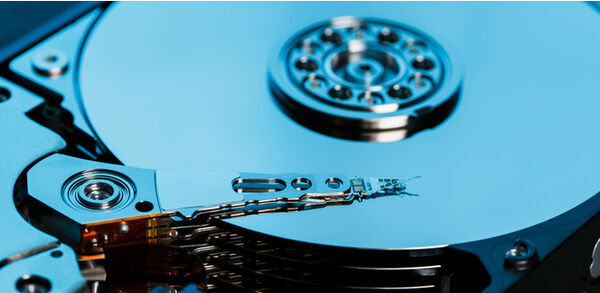
New Hard Disk Write Head Analytical Technology Can Increase Hard Disk Capacities
"Using synchrotron radiation at SPring-8 - a large-scale synchrotron radiation facility - Tohoku University, Toshiba Corporation, and the Japan Synchrotron Radiation Research Institute (JASRI) have successfully imaged the magnetization dynamics of a hard disk drive (HDD) write head for the first time, with a precision of one ten-billionth of a second. The method makes possible precise analysis of write head operations, accelerating the development of the next-generation write heads and further increasing HDD capacity. Details of the research were published in the Journal of Applied Physics on October 6 and presented at the 44th Annual Conference on Magnetics in Japan, on December 14. International Data Corporation predicts a five-fold increase in the volume of data generated worldwide in the seven years between 2018 and 2025. HDDs continue to serve as the primary data storage devices in use, and in 2020 the annual total capacity of shipped HDDs is expected to exceed one zettabyte (1021 bytes), with sales reaching $20 billion. Securing further increases in HDD capacity and higher data transfer rates with logical write head designs requires an exhaustive and accurate understanding of write head operations. There are, however, high barriers to achieving this: current write heads have a very fine structure, with dimensions of less than 100 nanometers." [...]
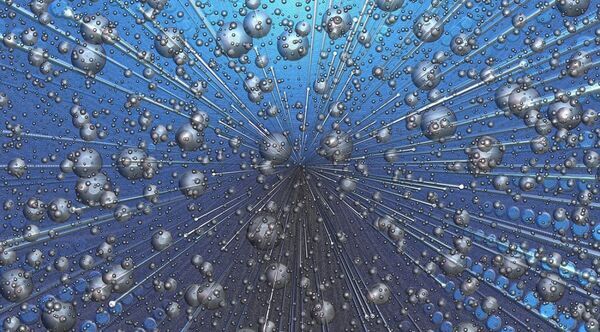
A Frankenstein of Order and Chaos
"Normally the word “chaos” evokes a lack of order: a hectic day, a teenager’s bedroom, tax season. And the physical understanding of chaos is not far off. It’s something that is extremely difficult to predict, like the weather. Chaos allows a small blip (the flutter of a butterfly wing) to grow into a big consequence (a typhoon halfway across the world), which explains why weather forecasts more than a few days into the future can be unreliable. Individual air molecules, which are constantly bouncing around, are also chaotic—it’s nearly impossible to pin down where any single molecule might be at any given moment. Now, you might wonder why anyone would care about the precise location of a single air molecule." [...]

On the Road to Invisible Solar Panels: How Tomorrow’s Windows Will Generate Electricity
"A new study led by scientists from Incheon National University in Korea shows how to make a fully transparent solar cell In a new study in Journal of Power Sources, an international team of researchers, led by Prof. Joondong Kim from Korea, demonstrate the first transparent solar cell. Their innovative technique rests on a specific part of the solar cell: the heterojunction, made up of thin films of materials responsible for absorbing light. By combining the unique properties of titanium dioxide and nickel oxide semiconductors, the researchers were able to generate an efficient, transparent solar cell. Five years after the Paris climate agreement, all eyes are on the world’s progress on the road to a carbon-free future. A crucial part of this goal involves the energy transition from fossil fuels to renewable sources, such as sun, water, wind and wave energy. Among those, solar energy has always held the highest hope in the scientific community, as the most reliable and abundant energy source on Earth." [...]

Speeding up machine learning by means of light
"Scientists have developed a pioneering new approach that will rapidly speed up machine learning – using light. An international team of researchers – from the Universities of Münster, Oxford, Exeter, Pittsburgh, École Polytechnique Fédérale (EPFL) and IBM Research Zurich - has developed a next-generation computer accelerator chip that processes data using light rather than electronics. The results are published in the leading scientific journal Nature on Wednesday, January 6th. Professor C. David Wright of the University of Exeter, who leads the EU project Fun-COMP which funded this work said: “Conventional computer chips are based on electronic data transfer and are comparatively slow, but light-based processors - such as that developed in our work - enable complex mathematical tasks to be processed at speeds hundreds or even thousands of times faster, and with hugely reduced energy consumption.” The team of researchers, led by Prof. Wolfram Pernice from the Institute of Physics and the Center for Soft Nanoscience at the University of Münster, combined integrated photonic devices with phase-change materials (PCMs) to deliver super-fast, energy-efficient matrix-vector (MV) multiplications. MV multiplications lie at the heart of modern computing – from AI to machine learning and neural network processing – and the imperative to carry out such calculations at ever-increasing speeds, but with ever-decreasing energy consumption, is driving the development of a whole new class of processor chips, so-called tensor processing units (TPUs). The team developed a new type of photonic TPU – one capable of carrying out multiple MV multiplications simultaneously and in parallel, using a chip-based frequency comb as a light source, along with wavelength-division-multiplexing." [...]

Orange is the new ‘block’
"Structure reveals key features that help block excess light absorption during photosynthesis Photosynthetic organisms tap light for fuel, but sometimes there’s too much of a good thing. New research from Washington University in St. Louis reveals the core structure of the light-harvesting antenna of cyanobacteria or blue-green algae — including key features that both collect energy and block excess light absorption. The study, published Jan. 6 in Science Advances, yields insights relevant to future energy applications. Scientists built a model of the large protein complex called phycobilisome that collects and transmits light energy. Phycobilisomes allow cyanobacteria to take advantage of different wavelengths of light than other photosynthetic organisms, such as green plants on dry land. This capability significantly increases global productivity from photosynthesis from across the solar energy spectrum — but it is fraught with risk." [...]

Supercapacitors challenge batteries
"A team working with Roland Fischer, Professor of Inorganic and Metal-Organic Chemistry at the Technical University Munich (TUM) has developed a highly efficient supercapacitor. The basis of the energy storage device is a novel, powerful and also sustainable graphene hybrid material that has comparable performance data to currently utilized batteries. Usually, energy storage is associated with batteries and accumulators that provide energy for electronic devices. However, in laptops, cameras, cellphones or vehicles, so-called supercapacitors are increasingly installed these days. Unlike batteries they can quickly store large amounts of energy and put it out just as fast. If, for instance, a train brakes when entering the station, supercapacitors are storing the energy and provide it again when the train needs a lot of energy very quickly while starting up." [...]

3D-Printed Smart Gel Changes Shape When Exposed to Light
"Rutgers engineers’ invention can become color-changing ‘artificial muscle’ Inspired by the color-changing skin of cuttlefish, octopuses and squids, Rutgers engineers have created a 3D-printed smart gel that changes shape when exposed to light, becomes “artificial muscle” and may lead to new military camouflage, soft robotics and flexible displays. The engineers also developed a 3D-printed stretchy material that can reveal colors when light changes, according to their study in the journal ACS Applied Materials & Interfaces. Their invention is modeled after the amazing ability of cephalopods such as cuttlefish, octopuses and squids to change the color and texture of their soft skin for camouflage and communication. This is achieved by the thousands of color-changing cells, called chromatophores, in their skin. “Electronic displays are everywhere and despite remarkable advances, such as becoming thinner, larger and brighter, they’re based on rigid materials, limiting the shapes they can take and how they interface with 3D surfaces,” said senior author Howon Lee, an assistant professor in the Department of Mechanical and Aerospace Engineering in the School of Engineering at Rutgers University–New Brunswick. “Our research supports a new engineering approach featuring camouflage that can be added to soft materials and create flexible, colorful displays.” Rutgers engineers developed a 3D printable hydrogel, or smart gel, that senses light and changes shape as a result." [...]
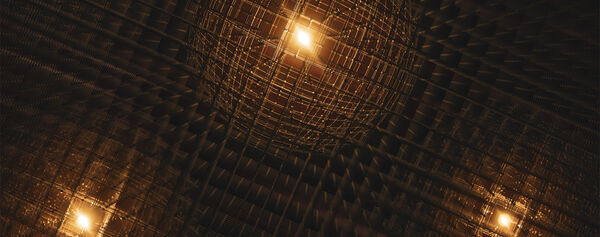
First glimpse of polarons forming in a promising next-gen energy material
"These fleeting disruptions, seen for the first time in lead hybrid perovskites, may help explain why these materials are exceptionally good at turning sunlight into electrical current in solar cells. Polarons are fleeting distortions in a material’s atomic lattice that form around a moving electron in a few trillionths of a second, then quickly disappear. As ephemeral as they are, they affect a material’s behavior, and may even be the reason that solar cells made with lead hybrid perovskites achieve extraordinarily high efficiencies in the lab. Now scientists at the Department of Energy’s SLAC National Accelerator Laboratory and Stanford University have used the lab’s X-ray laser to watch and directly measure the formation of polarons for the first time. They reported their findings in Nature Materials today. “These materials have taken the field of solar energy research by storm because of their high efficiencies and low cost, but people still argue about why they work,” said Aaron Lindenberg, an investigator with the Stanford Institute for Materials and Energy Sciences (SIMES) at SLAC and associate professor at Stanford who led the research." [...]
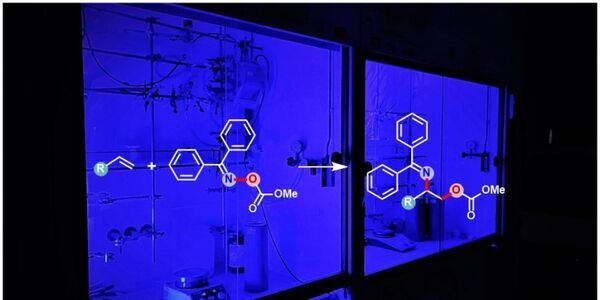
Chemists succeed in synthesis of aminoalcohols by utilizing light
"New method for generating the least accessible form of vicinal aminoalcohols / Study published in “Nature Catalysis” Whether in beta-blockers to treat high blood pressure or in natural products: So-called vicinal aminoalcohols are high-quality organic compounds that are found in many everyday products. However, their production is difficult. For a long time, chemists are trying to develop efficient methods of synthesizing them. In their recent study published in the journal Nature Catalysis, scientists led by Prof. Dr. Frank Glorius of Münster University have found a solution for the production of a special variant of aminoalcohols. "The new method helps to study the properties of the substance and to find applications for these new compounds in the future", emphasizes Frank Glorius from the Organic Chemistry Institute at Münster University. Vicinal aminoalcohols can occur in two different variants - called regioisomers - in which the amine and alcohol functional groups exchange positions." [...]
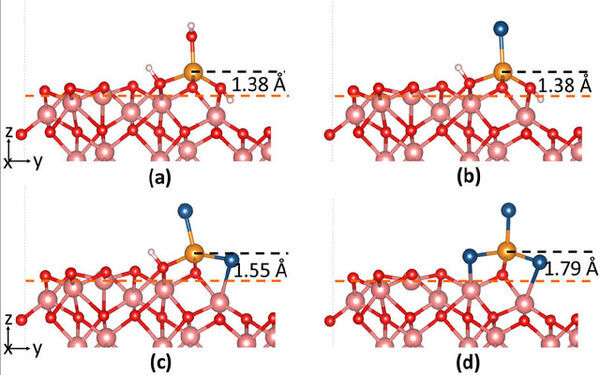
Supercomputer Models Describe Chloride’s Role in Corrosion
"UC San Diego supercomputer simulations show how chloride degrades structural steels Researchers have been studying chloride’s corrosive effects on various materials for decades. Now thanks to high-performance computers at the San Diego Supercomputer Center (SDSC) at UC San Diego and the Texas Advanced Computing Center (TACC), detailed models have been simulated to provide new insight on how chloride leads to corrosion on structrual metals, resulting in economic and environmental impacts. Conducted by a team from Oregon State University’s (OSU) College of Engineering, a study discussing this newfound information was published in Materials Degradation, a Nature partner journal. “Steels are the most widely used structural metals in the world and their corrosion has severe economic, environmental, and social implications,” said study co-author Burkan Isgor, an OSU civil and construction engineering professor. “Understanding the process of how protective passive films break down helps us custom design effective alloys and corrosion inhibitors that can increase the service life of structures that are exposed to chloride attacks.” Isgor worked closely with OSU School of Engineering colleague Líney Árnadóttir as well as graduate students Hossein DorMohammadi and Qin Pang on conducting the study. As a chemical engineering associate professor, Árnadóttir said her work often uses computational methods to study chemical processes on surfaces with applications in materials degradation." [...]

Comb of a Lifetime: A New Method for Fluorescence Microscopy
"Scientists develop a fluorescence “lifetime” microscopy technique that uses frequency combs and no mechanical parts to observe dynamic biological phenomena Conventional fluorescence microscopy provides poor quantitative information of the sample because it only captures fluorescence intensity, which changes frequently and depends on external factors. Now, scientists from Japan have developed a new fluorescence microscopy technique to measure both fluorescence intensity and lifetime. Their method does not require mechanical scanning of a focal point; instead, it produces images from all points in the sample simultaneously, enabling a more quantitative study of dynamic biological and chemical processes. Fluorescence microscopy is widely used in biochemistry and life sciences because it allows scientists to directly observe cells and certain compounds in and around them. Fluorescent molecules absorb light within a specific wavelength range and then re-emit it at the longer wavelength range. However, the major limitation of conventional fluorescence microscopy techniques is that the results are very difficult to evaluate quantitatively; fluorescence intensity is significantly affected by both experimental conditions and the concentration of the fluorescent substance." [...]
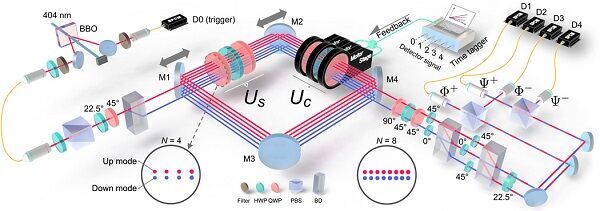
Scientists Reach Heisenberg Limit of Multi-parameter Quantum Measurement with Zero Trade-off
"Real-life applications like magnetometry or quantum gyroscope typically involve precise measurement on multiple parameters. How to achieve the ultimate precision limits simultaneously is a long sought-after grail in the field. It is widely believed that the ultimate precision limits for all parameters cannot be achieved simultaneously, since generators of different parameters are generally non-commuting, which induces the trade-offs among the precisions. Yet such trade-offs are escaped from by the group of Prof. LI Chuanfeng and Prof. XIANG Guoyong from Key Laboratory of Quantum Information at University of Science and Technology of China of the Chinese Academy of Sciences and their collaborator Prof. YUAN Haidong from Chinese University of Hongkong. They counteracted the trade-offs and achieved the Heisenberg limit for the estimation of all three parameters in SU(2) operators simultaneously with 13.27 dB improvement over the shot-noise limit, which has been published in journal Science Advances. XIANG and researchers extended the control-enhanced sequential measurement scheme from single-parameter estimation to multi-parameter estimation." [...]

Charging ahead for electric vehicles
"Roads installed with wireless charging technology could become an integral feature of our cities in an electric vehicle future. By applying statistical geometry to analyzing urban road networks, KAUST researchers have advanced understanding of how wireless charging roads might influence driver behavior and city planning in a future where electric vehicles (EVs) dominate the car market. “Our work is motivated by the global trend of moving towards green transportation and EVs,” says postdoc Mustafa Kishk. “Efficient dynamic charging systems, such as wireless power transfer systems installed under roads, are being developed by researchers and technology companies around the world as a way to charge EVs while driving without the need to stop. In this context, there is a need to mathematically analyze the large-scale deployment of charging roads in metropolitan cities.” Many factors come into play when charging roads are added to the urban road network. Drivers may seek out charging roads on their commute, which has implications for urban planning and traffic control." [...]

Boosting Solar Energy Conversion Efficiency
"A three-fold improvement in the efficiency of solar-to-hydrogen energy conversion can facilitate solar energy harvesting technology, according to environmental scientists at City University of Hong Kong (CityU). This research outcome could make a contribution to tackling the global energy shortage and provide new insights into the development of solar-to-fuel materials for photocatalytic applications in the emerging field of hydrogen technology. The research team led by Dr Sam Hsu Hsien-yi, Assistant Professor in the School of Energy and Environment (SEE) at CityU, has developed novel lead-free bismuth-based hybrid organic-inorganic perovskites (HOIPs) with a semiconductor heterojunction structure. The heterojunction structure could serve as a driving force to enhance the charge carrier transportation which is beneficial for hydrogen production under visible-light irradiation without the addition of co-catalysts such as platinum or ruthenium. The research is featured as the cover of the prestigious international journal Advanced Functional Materials under the title “In-situ formation of bismuth-based perovskite heterostructures for high-performance co-catalyst-free photocatalytic hydrogen evolution”. In the past few years, HOIPs have been widely used in solar energy conversion because of their remarkable photoelectric effects and extraordinary photovoltaic performance." [...]
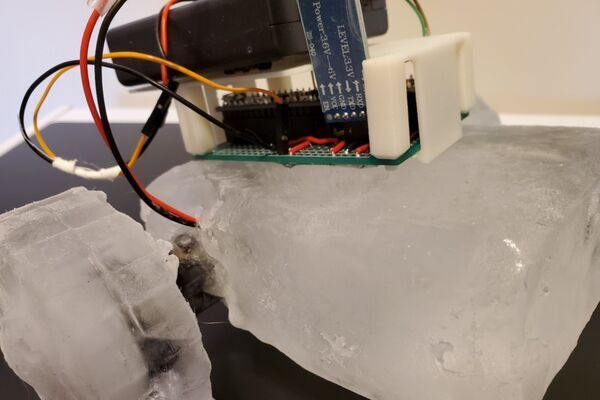
Robots Made of Ice Could Build and Repair Themselves on Other Planets
"No matter how much brilliant work the folks at NASA and JPL put into their planetary exploration robots (and it’s a lot of brilliant work), eventually, inevitably, they break down. It’s rare that these breakdowns are especially complicated, but since the robots aren’t designed for repair, there isn’t much that can be done. And even if (say) the Mars rovers did have the ability to swap their own wheels when they got worn out, where are you going to get new robot wheels on Mars, anyway? And this is the bigger problem—finding the necessary resources to keep robots running in extreme environments. We’ve managed to solve the power problem pretty well, often leveraging solar power, because solar power is a resource that you can find almost anywhere. You can’t make wheels out of solar power, but you can make wheels, and other structural components, out of another material that can be found just lying around all over the place: ice." [...]

Algorithms and automation: Making new technology faster and cheaper
"Additive manufacturing (AM) machinery has advanced over time, however, the necessary software for new machines often lags behind. To help mitigate this issue, Penn State researchers designed an automated process planning software to save money, time and design resources. Newer, five-axis machines are designed to move linearly along an x, y and z plane and rotate between the planes to allow the machine to change an object’s orientation. These machines are an advancement on the traditional three-axis machines that lack rotation capabilities and require support structures. Such a machine can potentially lead to large cost and time savings; however, five-axis AM lacks the same design planning and automation that three-axis machines have. This is where the creation of planning software becomes critical." [...]

Fungus as a sound absorber
"As healthy and tasty as mushrooms might be, they are good for much more than just the dinner plate. The Fraunhofer Institute for Environmental, Safety and Energy Technology UMSICHT has now teamed up with the Fraunhofer Institute for Building Physics IBP to investigate the use of fungus-based materials for the fabrication of eco-friendly sound absorbers. The incessant chatter of office coworkers who are always on the phone or the loud music of a noisy neighbor are a source of stress for many people. That’s because ambient sound does indeed affect our well-being and health. Sound absorbers can improve a room’s acoustics. Many of the soundproofing panels used in walls or room fittings in today’s interior designs are made of mineral fibers or synthetic foams." [...]

Reading out qubits like toppling dominoes: a new scalable approach towards the quantum computer
"Creating a powerful, large-scale quantum computer depends on a clever design such that many qubits (the building block of a quantum computer) can be controlled and read out. Researchers at QuTech, a collaboration between TU Delft and TNO, have invented a new readout method that is an important step forward on the road towards such a large-scale quantum computer. They have published their findings in Nature Communications today. Like toppling dominoes “Our new readout method is based on a phenomenon that all of us know from our childhood: toppling dominoes,” said Sjaak van Diepen, PhD researcher in Lieven Vandersypen’s group and lead author of the article. “A first transition triggers a second transition, a second transition triggers a third transition, and so on – much like dominoes toppling over in a chain reaction.” Considering the implications of this domino-effect led the team to invent a new readout method. It will be able to overcome a major challenge involved in scaling up towards large-scale quantum computers: that of qubit connectivity (the ability to connect many qubits together)." [...]
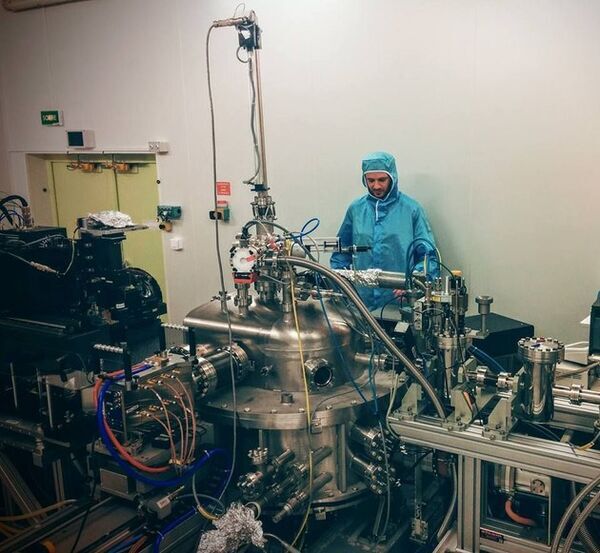
Opposites Attract: Scientists Discover How Mother-of-pearl Self-assembles Into A Perfect Structure
"Mother-of-pearl, also known as nacre, is an incredibly strong biomaterial forming the shell of some mollusks. Its strength and beauty comes from its remarkably regular and uniform architecture. Until now, it was unclear how this intricate structure could be built by a multitude of single cells, all secreting materials at different locations at the same time. In a new study published in Nature Physics, researchers from the B CUBE - Center for Molecular Bioengineering at TU Dresden and European Synchrotron Radiation Facility (ESRF) in Grenoble describe, for the first time, that structural defects in self-assembling nacre attract and cancel each other out, eventually leading to a perfect periodic structure. Mollusks build shells to protect their soft tissues from predators. Nacre, also known as the mother of pearl, has an intricate, highly regular structure that makes it an incredibly strong material." [...]

Researchers Achieve On-demand Storage in Integrated Solid-state Quantum Memory
"Researchers from CAS Key Laboratory of Quantum Information of the University of Science and Technology of China (USTC) of the Chinese Academy of Sciences have demonstrated on-demand storage of photonic qubits in an integrated solid-state quantum memory for the first time. This work was published in Physics Review Letters. Quantum memory is the core device for building large-scale quantum networks. Quantum repeaters or quantum hard drives, based on quantum memories, can effectively overcome photon loss in the channel, thus extending the working distance of quantum networks. On-demand storage requires one to determine the storage time after the photon has been absorbed by the quantum memory, which is essential for quantum networks. However, integrated solid-state quantum memories demonstrated so far are all based on the atomic frequency comb (AFC) scheme with a predetermined storage time." [...]
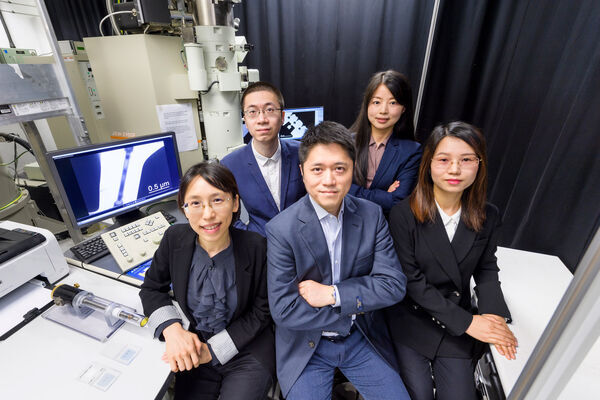
Breakthrough research heralds a new diamond age
"A joint research team led by City University of Hong Kong (CityU) has successfully achieved elastic straining of diamond at an unprecedented level, a breakthrough that heralds a new diamond age in the utilisation of the gemstone in microelectronics, photonics, and quantum information technologies. The research results show that microfabricated single-crystalline diamond tensile sample can attain a maximum uniform elastic strain of up to 9.7%, which is close to the theoretical elastic deformation limit of diamond. These groundbreaking results were produced by a team co-led by Dr Lu Yang, Associate Professor in the Department of Mechanical Engineering (MNE) at CityU, in collaboration with experts from Massachusetts Institute of Technology (MIT), Harbin Institute of Technology (HIT) and so on. Their findings have been published in the prestigious journal Science under the title “Achieving large uniform tensile elasticity in microfabricated diamond”. With its ultra-high thermal conductivity and exceptional carrier mobility, diamond is not only the hardest material in nature but also a promising electronic material that can tolerate high power and high frequency applications. However, one obstacle to the development of diamond-based electronic and optoelectronic devices is the “doping” challenge caused by the ultra-wide bandgap and its small lattice parameter." [...]
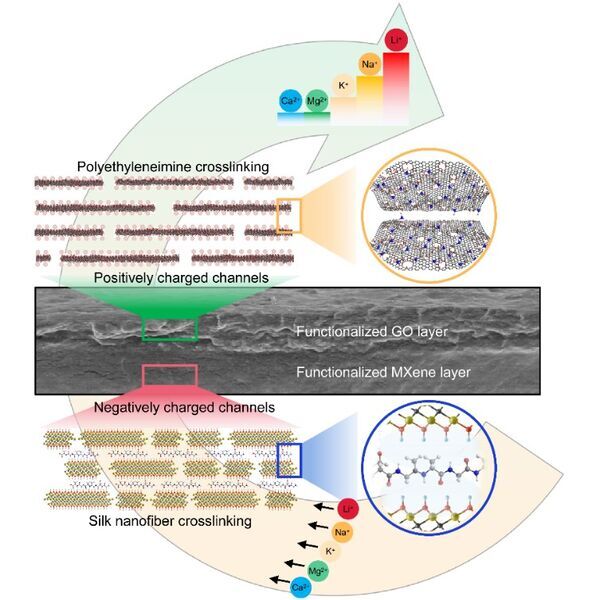
Bionic Idea Boosts Lithium-ion Extraction
"Lithium is an energy-critical element that is considered to be a geopolitically significant resource. However, the supply of lithium may not be enough to meet continuously increasing demand. As a result, scientists are looking for new ways to extract lithium ions. Ion selective membranes have already been used extensively for water treatment and ion sieving in electrodialysis technology. However, conventional membranes exhibit low and useless Li+ selectivity, making them insufficient for meeting industry requirements. Chinese scientists have recently made progress in the preparation and application of a bioinspired material that is capable of achieving controlled ion transport and sieving, especially for lithium-ion extraction." [...]
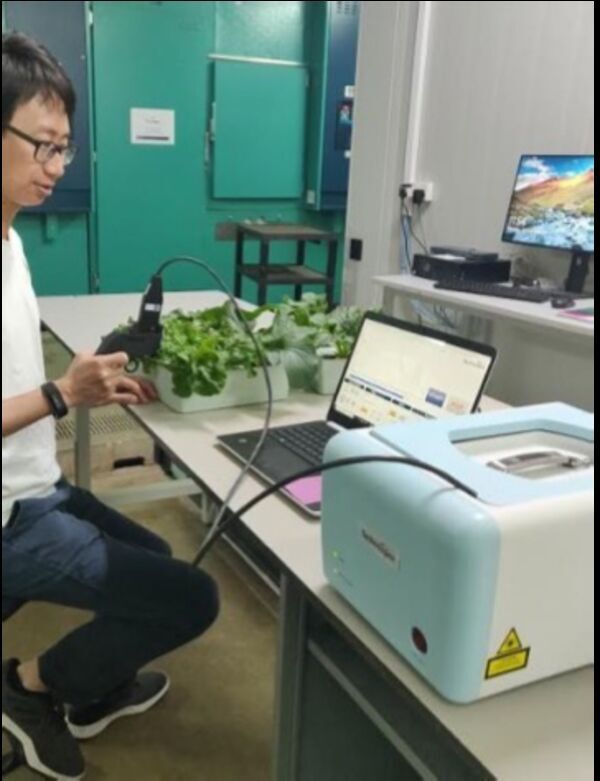
Portable device can quickly detect plant stress
"Sensor developed by SMART researchers would allow rapid diagnosis of nutrition deficiency in plants, enabling farmers to maximize crop yield in a sustainable way. Researchers at the Singapore-MIT Alliance for Research and Technology (SMART) and Temasek Life Sciences Laboratory (TLL) have designed a portable optical sensor that can monitor whether a plant is under stress. The device offers farmers and plant scientists a new tool for early diagnosis and real-time monitoring of plant health in field conditions. Precision agriculture is an important strategy for tackling growing food insecurity through sustainable farming practices, but it requires new technologies for rapid diagnosis of plant stresses before the onset of visible symptoms and subsequent yield loss. SMART’s new portable Raman leaf-clip sensor is a useful tool in precision agriculture allowing early diagnosis of nitrogen deficiency in plants, which can be linked to premature leaf deterioration and loss of yield. In a paper titled “Portable Raman leaf-clip sensor for rapid detection of plant stress,” published in the journal Scientific Reports, the scientists explain how they designed, constructed, and tested the leaf clip that allows the optical sensor to probe the leaf chemistry and establish the stress state." [...]
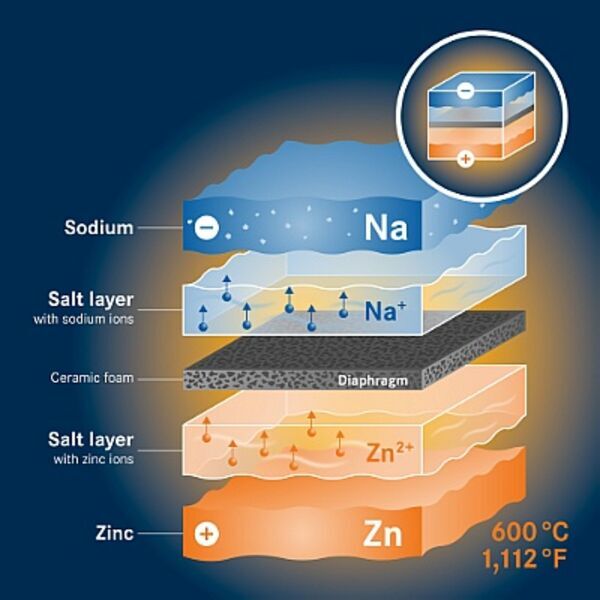
Solstice: Liquid metals for energy storage
"Reliable and economical systems for storing large amounts of energy are needed for industrial nations such as Germany to succeed in making strides toward a regenerative energy supply. An international team led by Tom Weier and Norbert Weber from the Institute of Fluid Dynamics at the Helmholtz-Zentrum Dresden-Rossendorf (HZDR) aims to bring such applications to a level in which they are ready for use. The SOLSTICE project strives to develop energy storage systems based on liquid sodium and zinc from January 2021 onwards. The European Union is funding the project with eight million Euros through the Horizon 2020 program. Liquid metals and molten salts heated to several hundred degrees Celsius and separated only by a semi-permeable membrane could lead energy intensive industries into the regenerative age. Their purpose is to store energy from the sun and wind on a large scale and provide it at night or in unfavorable weather conditions." [...]
Projetos Maker
Diversos Projetos interessantes.
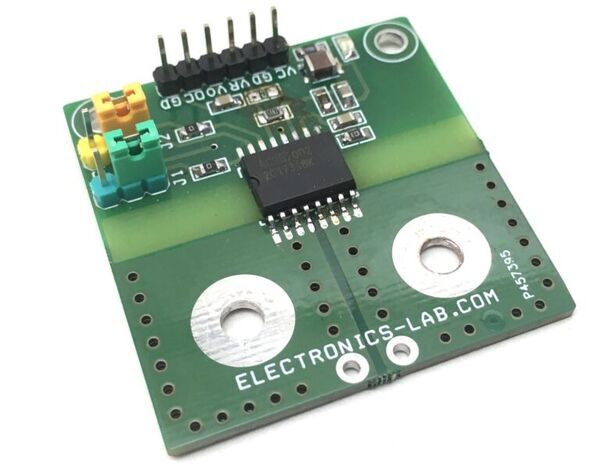
High Accuracy Current Sensor with 400Khz Bandwidth using ACS37002
"This is a high accuracy current sensor project build using ACS37002 IC from Allegro, which is a fully integrated Hall-effect current sensor with 0.85mOhms integrated conductor. A fast overcurrent alert output, programmable gain settings and analog linear voltage outputs are key features of this project. The sensor has optimized accuracy for current ranges +/-33A to +/-66 A and the analog voltage output is linear for the current of this range. The operating voltage of the project is 5V DC. The output voltage of this sensor is centered at VCC/2 =2.5V. Output sensitivity depends on the jumper settings, please refer to the table below for sensitivity/Gain configuration." [...]
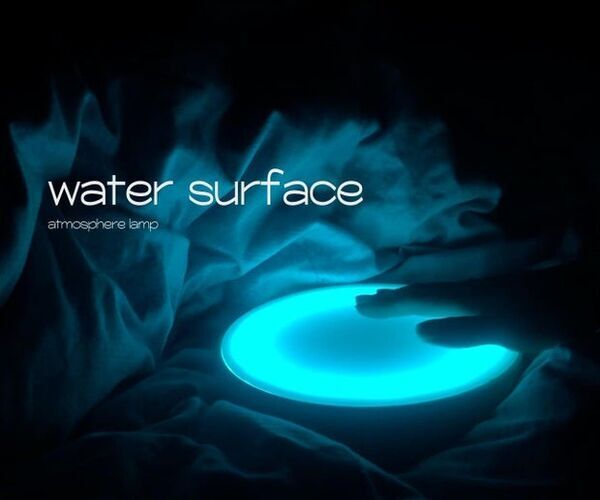
Water Surface Lamp
"This Instructable will show you how to make an atmosphere lamp that lights up just like making little waves on the water surface. It can be placed on your table, shelf, or bedside to create a harmonious atmosphere, bringing an absorbing experience to the user. To do this, you'll first want to gather the following materials: - Arduino Uno - Capacitive touch sensor breakout - Neopixel ring - 12 x 5050 RGB LED - Neopixel ring - 24 x 5050 RGB LED - Neopixel ring - 40 x 5050 RGB LED - Neopixel digital RGB LED strip - 9V battery clip with 5.5mm/2.1mm plug or Power bank with cable - Cardboard 25cm x 25cm - Ceramic bowls 20cm x 6.2cm - Rounded acrylic sheet 20cm - Hot melt glue gun - Soldering iron & Solder - Soldering stand - Wire strippers - Stranded-Core wire spool (multiple color) - Third-hand tool - Conductive tape - Flush diagonal cutters - Nylon cable ties - Ventilation tape" [...]

LED Chaser Circuit Without IC
"In this Instructable I show you how to make a simple LED chaser circuit. The special thing about this circuit is that it does not use an IC (Integrated Circuit). By using different resistors, capacitors and transistors, I succeeded in this project to make a circuit that lights the LED lights one by one. The base of both the transistors are connected to + connection through resistor. Any one transistor will get activated first. (this is because no transistor is exactly similar to other one)." [...]
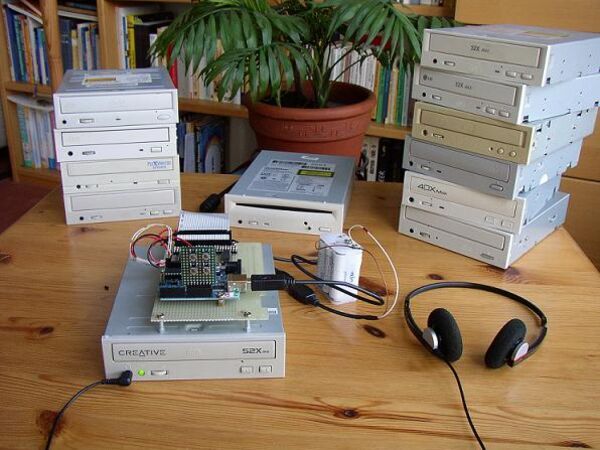
ATAPIDUINO
"This project makes the Arduino work as a simple ATAPI controller for a CD-ROM drive. It implements the following functions: PLAY, PAUSE, RESUME, NEXT, PREV and EJECT/LOAD. It has no own display -yet- but when connected to a PC the Arduino will communicate via the 'Serial.print' function the progress of CD-ROM initialisation and echo the operations started when a push button is pressed to command the CD-ROM. Also basic current track infromation is displayed. I found that not all CD-ROM drives react the same to ATAPI commands and that they differ also in their response speed. The sketch was tested alright with the following drives: LITE-ON LTN-403L 2000 Aztech CDA 668-01l 1995 LITE-ON LTN-486S 2001 LG CRD-8320B 1998 LG CRD-8521B 2001 CREATIVE CD5233E Hitachi CDR-8130 1997 SONY CDU5211 2001 Following CD-ROM/ DVD drives did not work: LG CRD-8322B Goldstar CRD-8240B/8241B Samsung DVD master 8E SD-608 Toshiba XM-6702B Plextor PX-W2410TA The LG CRD-8521B is a bit special, it will get stuck if no CD is placed in the tray before it initialises." [...]
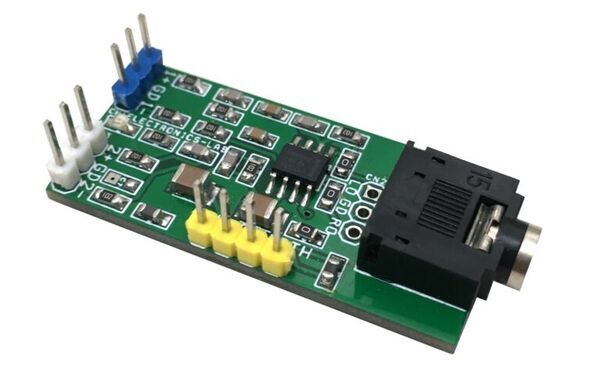
Headphone Amplifier For DAC Converter
"This is a headphone amplifier project for audio digital-to-analog converters (DACs) with differential voltage outputs. This circuit converts the differential voltage output of the DAC to a single-ended, ground-referenced signal and provides the additional current necessary for low-impedance headphones. Project is built using OPA1688 low distortion, high-drive Sound Plus audio amplifier. The circuit tested with dual +/-5V DC supply, and it can drive a load 16 Ohms to 600 Ohms. Headphone amplifier provides an output 50mW into 32 Ohms. Signal for the right channel and left channel input is applied to the amplifier through connectors CN1and CN3, respectively." [...]

USB Foot Switch Controller in Circuit Python
"In this guide, we'll build a USB foot switch controller. This can be used as an addition to your keyboard or as a way to free up your hands. I'm using it to do overhead photography so I can trigger the camera and use my hands at the same time. It’s powered by Adafruit’s Trinket M0 which is a tiny microcontroller that can run Circuit Python. Just connect over USB and load it as a flash drive. All of the code and libraries are accessible on the drive so you can make small edits and iterate quickly." [...]
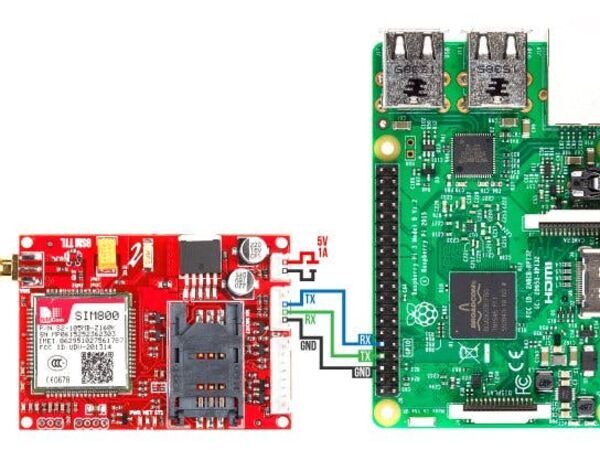
Raspberry pi SMS
"Software for Raspberry pi to send and receive SMS. Also you can send commands to the raspberry pi to do specific actions. I use a modem connected to a raspberry pi 2 B, to receive the status of one system connected to the raspberry. The Raspberry read the sensors and send a SMS with the information whenever the sensor cross a defined threshold, Also I can send commands by SMS to the raspberry to do specific action like, force the reception of the status, know if the system is running or reboot the raspberry. I wrote this code in C but I also create a class in C++. The code is very simple first: I setup the modem and send the proper AT commands to setup the SMS." [...]
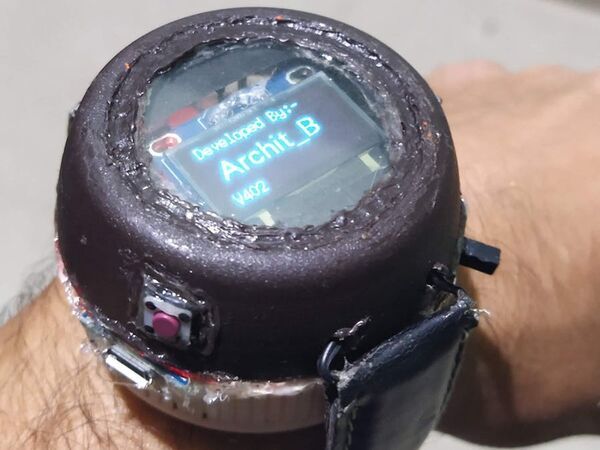
Bluetooth Smart Watch Arduino
"This is a DIY Arduino smart watch, works on Bluetooth connectivity and is chargeable - tested for 6 Hours performance on one charge. This is a DIY Arduino Bluetooth smartwatch that I made after going through lots of previously made similar projects on the internet. I added features like saving notes in watch, getting SMS and phone number on watch, find my phone feature and calculator. It is chargeable, and as per test with a 3.7V, 500mAh lipo battery it runs for 6 Hours with a charging time of approximate 30 minutes. The watch is made to shut down the screen after 15 seconds inactivity hence 6 Hours is the maximum time of operation. " [...]
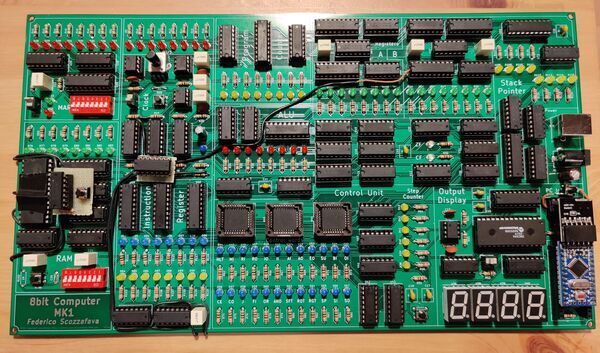
MK1 8bit Computer
"The MK1 CPU is composed of several modules, all connected trough a common 8-bit BUS, the status of each module is shown by dedicated LEDs. The clock module is designed to allow step-by-step execution; in automatic mode the clock speed can be adjusted from 1Hz up to 32KHz. The computer programs are stored in RAM and the CPU can be programmed both manually, by inserting binary machine code through dip-switches, and automatically via a USB PC interface. The Programming interface is designed to be used in conjunction with an Arduino Nano or the Start9 programming board. The Start9 programming board allows the loading of multiple programs stored on an on-board flash memory without the aid of an external computer device. The Addressable memory space is 1024 byte, data, stack and code spaces are separated, the code address space is not writable." [...]
7-Segment NeoPixel Clock With Countdown Timer
"In this Instructable, my twin brother, Sunyecz06, and I will show you how to make a 7-segment NeoPixel Clock with Countdown Timer. The inspiration for this project began with our parents and their fitness room. While they have an older digital clock in the room, it has no functionality other than telling the time. And oftentimes, our parents will use their phones as a countdown timer for their workouts but they have no dedicated stand for it, so situating it in the room is cumbersome and tedious. My brother and I always try to make something for our parents for Christmas and we came up with the idea of creating an Exercise Clock that not only adds a modern clock into the room but also incorporates a countdown timer so that our parents will not have to fumble with their phone timers anymore. While we designed the clock with exercise/fitness in mind, this can be created and placed in a variety of other locations!" [...]

Low Noise Adjustable Power Supply (30V-4A, CC-CV)
"Power supplies are one of the most popular topics in electronics. There are two major types of regulated power supply: linear and switching. Both power supply types introduce some advantages and disadvantages, however, a linear power supply offers better line and load regulation figures and it handles lower noise at the output, specifically when the power supply is adjustable and the output is under load; although its efficiency is lower than a switching power supply. In this article/video, I introduced an adjustable 30V-4A linear power supply that provides constant voltage and constant current adjustment. The output noise of the power supply is low and has measured using the power analysis feature of the Siglent SDS2102X Plus oscilloscope. All component packages are through-hole, so you don’t need any special tool for soldering." [...]

Arduino SpeedMath Game
"SpeedMath Game is a fun way to test your abilities at how fast you can do math in your head both visually and auditorily. This has been the first time I have ever created an Arduino project and it has been an enjoyable experience. I have created this project for a university course I have taken: Embedded Systems. This Arduino game is suitable for everyone and it contains multiple ways of displaying arithmetic problems, including visually, and auditorily. There are several levels you can play: easy, medium, and hard; each with its own unique characteristics. " [...]

Electric Puzzle Game
"1.1 What is it When I was a child I had a game like an electric puzzle that fascinated me. With that game, you could make a lot of electric circuits like radio, buzzer sounds, lights...and others. This project is not like that game but is something close.I wanted to buy such a game but you don't find such games these days. So first I want to show you what this game can do so you can decide if you want it or not. This is a puzzle-like game where the puzzle pieces are electronic components. I made 19 circuits using simple passive electronic components." [...]
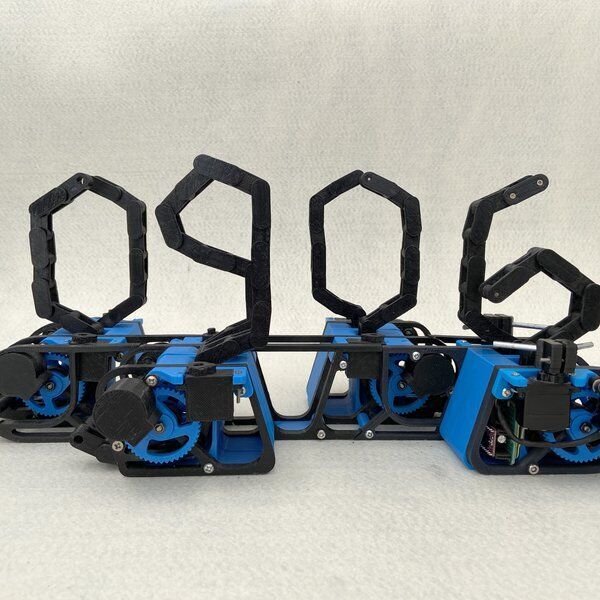
Getula
"Morphing clock A Bicycle chain lying randomly on the street gave inspiration for this art work. The simple idea of creating numericals out of a continuous chain quickly turned into a complex beast. The chain is made out of 3d printed linkages to keep the weight low with rubberized frictional joints to retain the position they are left in. Each digit consists of two chains as its is hard to maintain the shape of the letters with a long one piece chain. The chains are pushed forward by stepper motors and then bent into shape using servo motors. Four such digits make up the entire clock." [...]
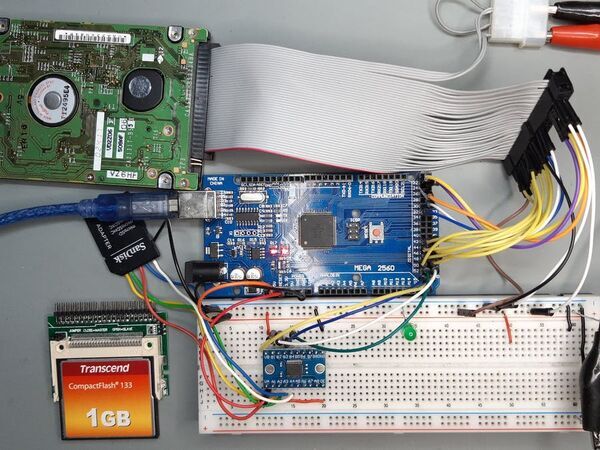
Extend an Arduino with a CF Card or IDE Drive
"Interface an Arduino Mega with an IDE drive or CF Card! It is easier than you might have thought! The built-in 1 or 4 kilobyte EEPROM memory of an Arduino is quickly used up if you want to permanently store large amounts of data. So it makes sense to connect external mass storage devices in some cases. Fortunately there is already a library and various breakout modules available that allow to connect an SD card to the Arduino. But it is also possible (and not even difficult) to connect CompactFlash and even older hard drives, disk drives or CD- Rom drives to an Arduino Mega." [...]
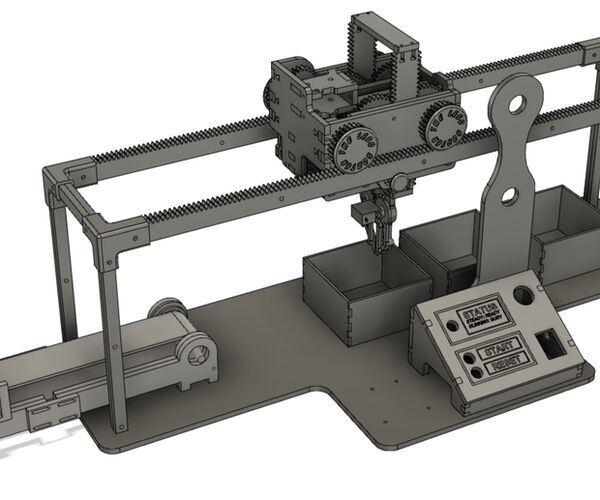
Mechatronics Project: Lego Sorter
"As part of the fulfillment of requirements for the Mechatronics class and as MA1 students in electromechanical engineering of the Bruface program, we were tasked with creating a working mechatronic system that incorporates what we learned in theory during lectures, mainly mechanical and electronic design as well as programming. The project was a group assignment and we were a total of four students working on it. We were given access to resources from the Fablab (e.g Laser cutter, 3D printers, and various other tools) and a global budget of 200 euros. The goal of our project is to sort lego blocks based on their color and put them in designated boxes using a gripper system. The lego blocks are fed to the sorting mechanism using a mini conveyor belt equipped with a color sensor that gives the signal to the sorting mechanism to put the block in the adequate box. The system can be divided into three main parts: lego feeding system (conveyor belt), system that drives the vertical and horizontal motion for sorting (cart moving on frame), and the gripper." [...]

YARH.IO Micro 2
"Welcome to the new stage of the YARH.IO project, where our goal is to build a device designed for hacking, coding, and creative use. YARH.IO Micro 2 has been made with hackers in mind, for computer experts who uses their technical knowledge to achieve new goals and overcome computer system limitations by non-standard or 'hackable' means. YARH.IO Micro 2 project continues to take on the challenge of building a full featured, micro sized handheld, based on Raspberry Pi 3B+, 4" touch screen and Bluetooth keyboard without touchpad. YARH.IO Micro 2 can run Raspberry Pi OS or Kali Linux, providing users with a rich range of applications and development tools. This is a rare handheld that allows users to write new program code directly on the device for the use on the device itself. YARH.IO Micro 2 is powered by Raspberry Pi 3B+, offering the best ratio of functionality and computing power requirements for a mobile, battery powered device." [...]
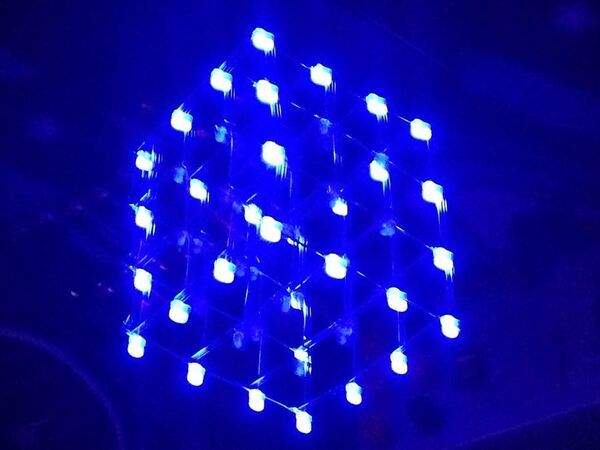
Raspberry Pi 4x4x4 LED Cube - PiCube
"PiCube can be used by beginners and professionals to strengthen their logic by typing complex code to draw out various patterns. I've been fascinated with LED cubes for a while now, but haven't been able to bring myself to build an Arduino-based cube. They turn on quickly and nicely, yes, but writing the code is a horrible mess of bits and bytes. The Raspberry Pi's Python-based GPIO interface was much more appealing (and readable) to me, so I decided to build an LED cube that was based off a Raspberry Pi. An 8x8x8 cube was way too big for an entry-level LED cube project, so I went with a 4x4x4 LED Cube for Raspberry Pi instead. If you've got a Raspberry Pi and 60-ish LEDs lying around, then maybe this is the project for you." [...]

Sensor based tic-tac-toe game using Arduino
"Tic-Tac-Toe, noughts and crosses, or Xs and Os/“X’y O’sies, However you call it, This game owns a special place in the heart of all. All of us have played this game with our friends, families, in schools, colleges and sometimes in the parties as well. But, But, But, Why am I telling this to you? Because I know you’re a technology geek and so are we here at Techiesms. We at the Techiesms studio wanted to make something cool for our vacant wall and here is what we came up with. The Automated Tic-Tac-Toc Game which you can play with a punch." [...]
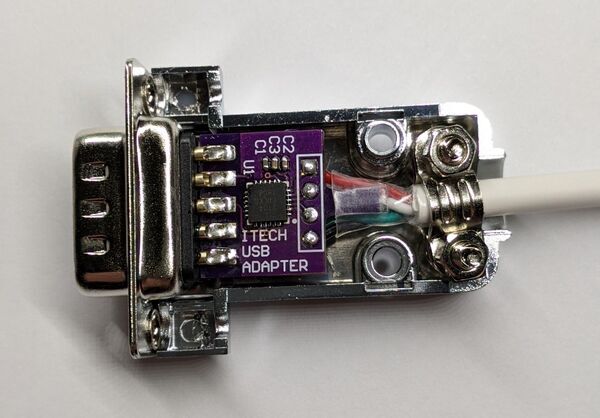
Itech USB-to-Serial adapter
"Some ITECH test equipment has a DSUB connector with a standard-breaking 5V TTL connector on it. This is a non-isolatd USB converter for this equipment, for interfacing to a PC. It is known to work with at least the following models: ITECH IT6831 DC power supply ITECH IT8511 electronic load It should also work with all models in the IT6800 family, as well as several BK precision devices which they appear to be direct copies of. Note that the A- and -+ versions of these test equipment generally have built-in USB ports that support USBTMC, which is somewhat easier to work with. " [...]

PhaseMod Drone Synth (w/ Arduino Nano & Mozzi)
"A small noise/drone synth with percussion mode. Made using the Mozzi library and two Arduino Nanos. This project was made as a thank-you present to a friend of mine for helping me with a repetitive stress injury that flared up really badly late last year. It's a phase modulation synthesizer with an internal LFO controlling the modulation and an optional internal envelope with controllable decay to turn it into a (pretty janky and bizarre) drum machine. It has two voices (one per Nano) and the following parameters are controllable via the pots for each voice: - Carrier frequency - Carrier waveform - Modulator frequency (in integer multiples of the carrier) - Modulator waveform - LFO frequency - LFO amplitude - LFO waveform - Decay Below is a video of my friend trying to figure out what it does (I gave it to him as a surprise without any instructions or explanation). " [...]
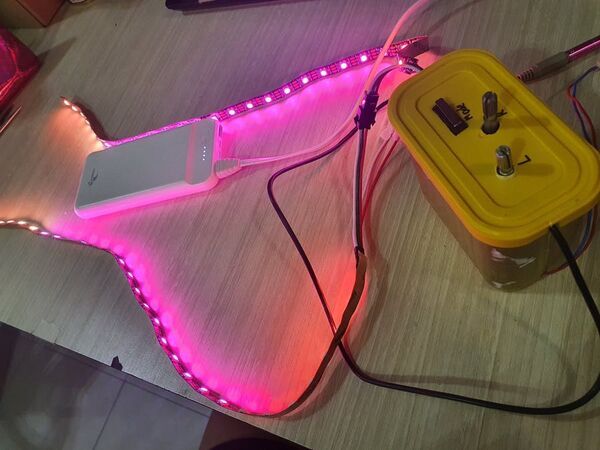
ESP32 Stereo audio spectrum visualizer with amplifier
"Make audio come to life. Get the mood on and "See the music" suitable for gaming and music. I was inspired to created this project one day once I saw a YouTube recommendation for Scott Marley's video for making the ESP32 VU meter. His project caught my eye when I thought it can be a great alternative to Logitech's Lightsync PC gaming speakers. Their speakers provide a fantastic way to create that intense mood when gaming compared to just standard RGB LED Strips that don't really do much. " [...]

An Internet Controlled 2020 Smusher
"Let’s face it: 2020 was a terrible year and we’d love nothing more than to see it disappear. As 2020 has been a horrible year, the first thing that came to mind was “kill it with fire!”. Although we love playing with fire and have great fire insurance, we both realised that using actual fire would not be the best idea. 2020 was bad enough without us mucking about with flammable stuff, so we opted for the next best thing: 3D printed fire! The idea is to make the numbers “2020” out of playdough and satisfyingly smush them using the 3D printed fire. The object doing the smashing should be something that’s also had more than enough of the past year, so what about… planet earth?" [...]
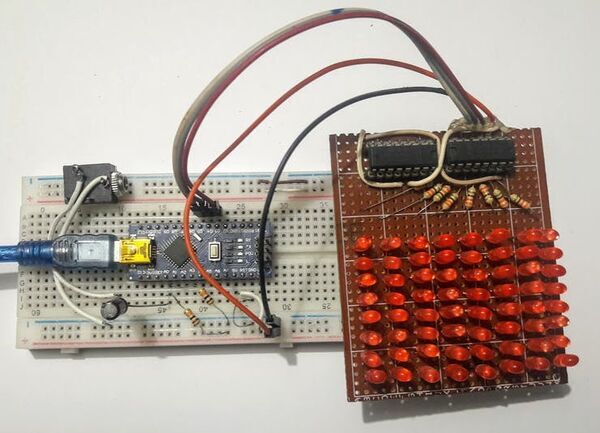
Music Spectrum Visualizer with Arduino Nano
"Visualizes the peak of frequencies with different bars on 8*8 led dot matrix using Arduino Nano. The project is about how we can transform complex signal into simple or primary signals. Here we are using audio signal and make them decomposed into signals of different frequencies. We are using Fourier transform, which helps us to decompose the signal. Fourier analysis converts a signal from its original domain (often time or space) to a representation in the frequency domain. We are visualizing different frequency bands by their peak at the audio signal." [...]
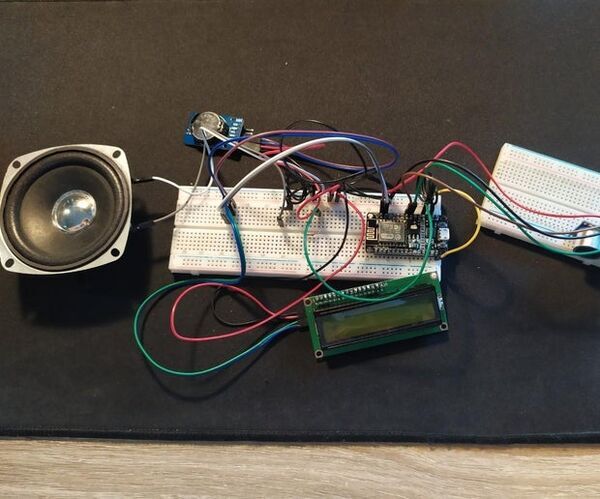
ESP8266 NodeMCU Based IoT Alarm Clock With Blynk
"Hello and welcome to our instructable about using ESP8266 NodeMCU Based IoT Alarm Clock With Blynk. This project is made by two students named Valentino Kevin and Ryan Jonathan from BINUS taking a degree in Computer Engineering, and in this project we are making an IoT device involving a microcontroller, specifically the ESP8266 NodeMCU because it is a very small device and also a popular choice for IoT projects. Without further ado, below is the list of components used for this project. Supplies:List of needed components: 1. ESP8266 NodeMCU 2. LCD I2C Screen 16x2 3." [...]

RGB Glasses
"Hey guys how you doing! So here's my ESP12F Based RGB LED Glasses which are made entirely from PCBs I prepared a PCB with normal glasses size and put WS2812B LEDs on it, and then used an ESP12F to control the LEDs via a WEB Server. The frame has been modeled just like actual glasses, only difference here is that the material of these glasses is FR4 instead of Plastic. Supplies: Materials Required (BOM) Frame PCB x1 Temple PCB x2 Stencil 10K Resistance 0805 x 4 push button x1 Header pins 10uf 16V Capacitor 22uf 1206 Capacitor x 1 4.7uf 1206 Capacitor x 1 200R (0 Ohms can also be used instead of this) AMS1117 x 1 USB Micro port M7 Diode DPDT Switch ESP12F WS2812B LEDs x 49 NODEMCU" [...]

AI Auto-Classify Trash Can
"This project is a trash can that recognizes and classifies garbage automatically. Use Machine-Learning and Arduino in Scratch. How it works 1. Camera takes an image of garbage. 2. Machine-Learning model recognizes the classification of garbage by the image." [...]
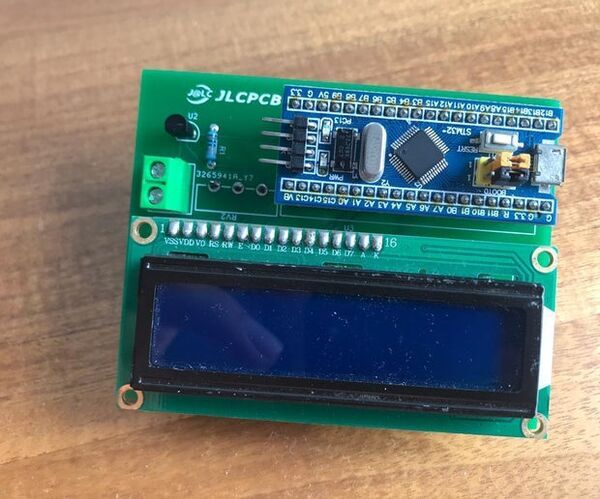
LCD Tempeture Sensor With STM32F103
"Tempeture is a crucial variable in many process. To help messure it, there are lots of sensors that can fulfill this task. On this one, we are going to use the LM35 to measure temperature, and also, we are going to be showing the data on a LCD The STM32F103 is a very powerfull controller and is more than capable to manage this task" [...]

Microbit Talking Robot
"As we know, Tinkercad introduces a new feature in the Tinkercad circuit, which is Microbit. We can make a virtual prototype in making things related to Microbit, and even can do a simulation. We can save lots of money to build an experiment without having to damage our electronic components. Moreover, we can add some codes to bring the experiment to work. Unfortunately, after reading Tinkercad's blog, this launch has a drawback. When exporting the code, Tinkercad only transfers it into JavaScript language." [...]
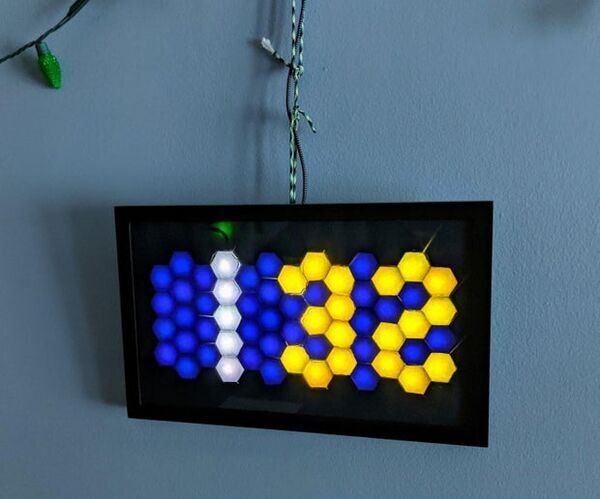
HexMatrixClock
"Hexagons are cool -- they have six sides, they tile a plane, they have a structure like the carbon atoms in graphite, each cell has six neighbors, and there are six cardinal directions. But mostly, they are not square when so many computer things are. So I wanted to make a project using a display made of hexagonal pixels (hexels). I wanted the display to do something useful in addition to looking interesting, so I made it a clock. The clock has 13 columns with either four or five LEDs, a total of 58 hexels that mostly fills a 17"x10" picture frame. It runs standalone keeping time via a battery-backup real-time clock, or can be connected via USB to a host computer that can push bitmaps, change color schemes, or most importantly set the internal clock." [...]

Constellation Map Lamp
"In 2019 for the July Fourth holiday, I went on a camping-climbing trip in Bishop, CA with friends. It was my first time camping and second time climbing outdoors, so I was excited for all the new experiences and activities I got to try. There were earthquakes that weekend, one of which happened on the second pitch of our first time trying a multipitch route. Those friends have moved away now and with COVID going on, I haven't camped let alone climbed in a while. I was going through my picture albums to reminisce and thought about making something to represent the memories I've had with outdoor climbing. I ended up deciding to do a constellation based lamp." [...]
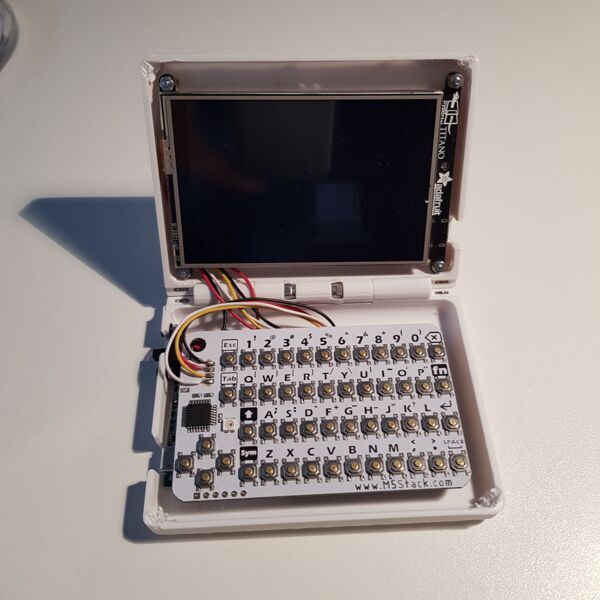
PortablePy: The clamshell micropython computer
"I admit: I love how home computers from the 80ies were booting up in no time. I’ve been trying to optimise the boot up time for Raspberry Pis for some time but I don’t get very far. I’m also fascinated by baremetal implementations where hardware is used for a single purpose and also works on an instant. Micropython is a nice idea inbetween as it is a “high level language” and still runs without too much overhead on very small resources. Another thing that I’m dreaming of is to be able to write software on the go using a minimal dedicated device. My prrevious attempts comprise: The StickPi (super small Pi Zero with an epaper display and no keyboard for ssh access from a notebook, no battery) The PocketPi (battery powered Pi Zero, 800×480 4in Hyperpixel screen incl a small keyboard) Last week’s PsionPi (battery powered Pi 3a+, Psion 5 Series keyboard incl Arduino keyboard controller and a 7in 800×480 screen) And a yet unpublished 5in screen slate design." [...]
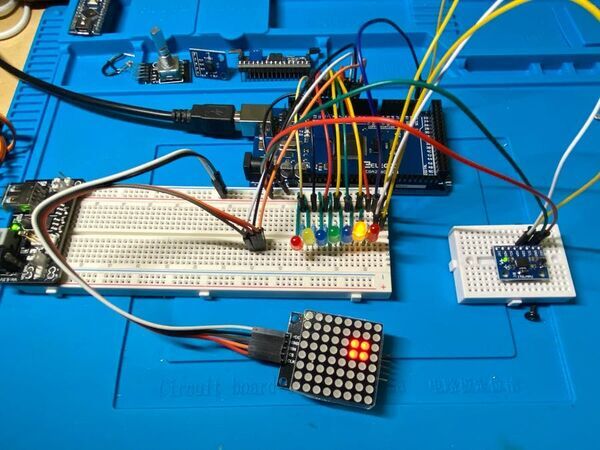
2 Axis Digital Bubble Level V1.0
"A 2 axis level utilizing an MPU6050 (GY-521), Arduino Mega, 8X8 LED Matric (MAX7219) and 7 standard LEDs. Modular precision & fast response. Learning, experimentation, creating. The thing that drives most of us in this realm. After assembling and completing a project that someone else has put together for you, the next step is to expand on it and make it yours. This was a fun and challenging project as it put all my skills to work." [...]

Color Terminal
"The Color Terminal can be used to pick color from physical things by scanning its surface with Seeed Wio Terminal and TCS34725. A color picker (also color chooser or color tool) is a graphical user interface widget, usually found within graphics software or online, used to select colors and sometimes to create color schemes. Traditional color picking software can't take color from a physical surface, that's where the color terminal comes to play. It's a device that can take color and provide color code in Hex and RGB values. The Color terminal powered by SeeedStudio Wio Terminal and Adafruit RGB Color sensor . Let's Build Components Required Wio Terminal: Wio Terminal based on ATSAMD51-based microcontroller with wireless connectivity supported by Realtek RTL8720DN and is equipped with a 2.4” LCD Screen, onboard IMU(LIS3DHTR), Microphone, Buzzer, microSD card slot, Light sensor, and Infrared Emitter(IR 940nm)." [...]

Build Your Own Internet Radio / Construisez Votre Propre Radio Internet (bilingue)
"Hi there ! Build easily your own internet radio with a nice vintage look. A simple LCD screen displays the tuned station and the audio volume. This radio is basically designed around a Raspberry Pi board programmed with Python. Supplies: 1 Raspberry Pi 3 Model B+ 1 Raspberry hat shield 1 micro SD 16Gb Class 10 1 5V 3A power supply with a switch 1 LCD screen 2 lines x 16 characters 1 4 ohms 5W speaker 1 10K potentiomer with a switch 1 A/N converter MCP3008 Dupont cables Sand paper Primer Spray paint" [...]
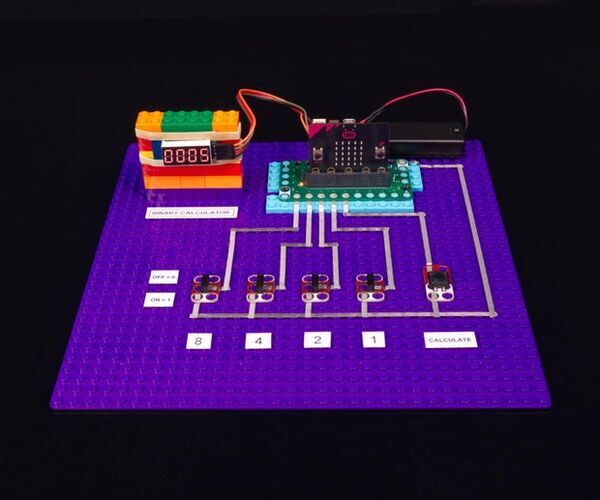
Binary Calculator With Micro:bit
"We used a micro:bit with a Crazy Circuits Bit Board and some LEGO pieces to build a Binary Calculator with a 4 bit register. It's a great way to learn how binary works and how to calculate a decimal number from a binary number. If you like our projects and want to see more of what we get up to each week please follow us on Instagram, Twitter, Facebook, and YouTube. Supplies:Brown Dog Gadgets does in fact sell kits and supplies, but you don't need to buy anything from us to make this project. Though if you do it does help support us in creating new projects and teacher resources. Electronics: 1 x Crazy Circuits Bit Board 1 x micro:bit 1 x 7 Segment Display 4 x Jumper Wires 4 x Crazy Circuits Slide Switch 1 x Crazy Circuits Jumbo Pushbutton Maker Tape 1/8" Wide Other Supplies: 1 x LEGO Baseplate Misc LEGO Parts" [...]

Node-RED Console for Teaching Physical Computing / AI / IoT
"Through Code Club I have come to appreciate the value of visual, no-code approaches to teaching computational thinking. I wanted to expand upon the physical computing education possible with a Micro:Bit and also to introduce IoT and AI to Code Club audiences (9 - 13 year olds in schools, libraries, makerspaces and youth clubs). I stumbled on TJBot, which was my first exposure to node.js. I was intrigued by the API-based method of interacting with Watson using a Raspberry Pi, but I considered node.js to be too complex for my intended audience, and TJBots sensors and actuators to be too limited for my purpose. At the same time, my employer was throwing away an old 3G router, and I wondered if I could squeeze a Raspberry Pi and other bits inside. Gradually the idea of repurposing the router enclosure to create a physical computing / IoT / AI console took shape." [...]

I2C With the ESP8266-01 !? || Exploring ESP8266:Part 1
"Hello all ! With this instructable I will be writing and documenting a series of projects mentioning and exploring the various hidden ( rather unexplored ) features of the tiny ESP8266-01 WiFi Module. Did you know that the ESP8266-01 supports I2C communication? Yes it is true, this little module lying unattended in one corner of your electronics bench has the capability to support this amazing communication protocol. This module is mainly used to connect and provide WiFi connectivity to a project using the serial communication involving Tx and Rx pins of the module. But in reality this cheap module is in itself a very capable microcontroller that can be used as standalone projects as well." [...]
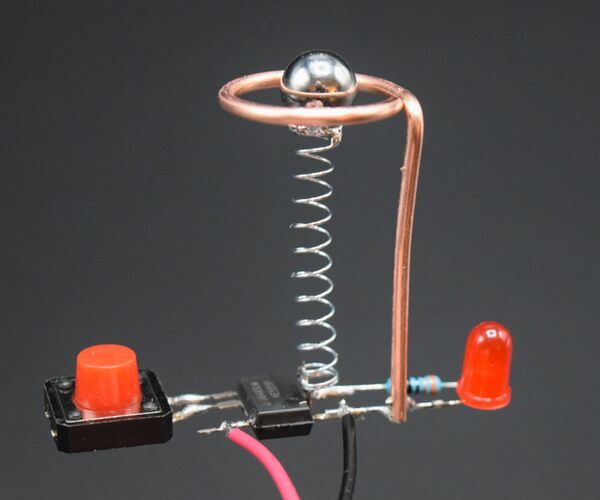
How to Make a Vibration Sensor
"While browsing Instructables I came across teebee918's project where he made 2 different types of "motion" sensors. I continued on the principle of one of the sensors. This sensor consists of a spring on which an iron ball is mounted. When this ball moves it hits a conductive ring around the ball, causing the sensor to make contact. The contact time of this sensor is very short. Connecting a lamp or alarm to it to be alerted when the sensor moves is therefore difficult." [...]

Make Cutting Boards With Minimal Tools
"Cutting boards with minimal tools is a tutorial that will give you lots of advice tips & tricks to get you started making cutting boards with minimal tools! Every woodworker gets asked at some point to make a cutting board as a gift to someone special in their lives. Maybe its your sweet grandma or your wife or next door neighbor. But the beginner woodworker might feel like they don't have the tools to successfully make a cutting board. Maybe you don't have a jointer, a planer, a big ole cabinet saw, etc. This tutorial's aim is to show you that you absolutely can!" [...]

Triangle Robot V2
"Hello Everyone, In this Instructables, I will share how to make a Triangle Robot, using a combination of recycled cardboard, skewers and 3d printed parts. Design considerations - Environment friendly, use of recycled cardboard / wooden skewers - Reduce 3d printed parts and hence reduce iterations to improve model, avoid PLA wastage - Print only parts that I could not make - Reduce time to 3d print / build the robot" [...]
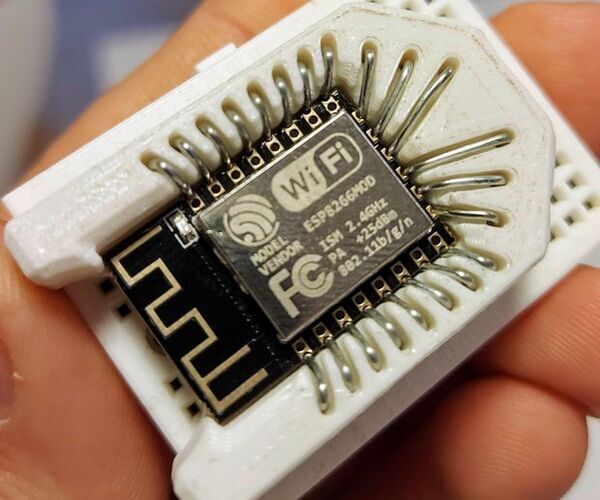
DIY ESP8266 ESP-12 Socket - Snap Fit, Breadboard Friendly, No Soldering
"I've been looking for an ESP8266 (ESP-12) socket for a long time, and the way I see it, It had to have all of these properties: 100% Breadboard FriendlyNo soldering requiredSnap Fit and snugly hold the ESP8266DIY from everyday household itemsEasy to printEasy to buildI found a few solution on Thingiverse.com, But non of them met all my prerequisite, so I designed my own socket. The socket turned out very good and the design met all my expectations and conditions, in addition it has a cool 'Spaceship' look. Supplies: 3D Printer (I used my Creality Ender 3 V2) Pliers Cutter #2 Paper Clips" [...]

Simple Touch on Touch Off Circuit
"In this Instructable I show you how to make a simple push to push off circuit with a 555 timer. Because I have come across several projects that use this 555 timer and I had no idea what a 555 timer does exactly, I wanted to make a project to get to know it better. Therefore a simple circuit first. The basic 555 timer gets its name from the fact that there are three internally connected 5k resistors which it uses to generate the two comparators reference voltages. The 555 timer IC is a very cheap, popular and useful precision timing device which can act as either a simple timer to generate single pulses or long time delays, or as a relaxation oscillator producing a string of stabilised waveforms of varying duty cycles from 50 to 100%.The 555 timer chip is extremely robust and stable 8-pin device that can be operated either as a very accurate Monostable, Bistable or Astable Multivibrator to produce a variety of applications such as one-shot or delay timers, pulse generation, LED and lamp flashers, alarms and tone generation, logic clocks, frequency division, power supplies and converters etc, in fact any circuit that requires some form of time control as the list is endless. As I said, I'm going to start simple." [...]

A Safe for Valuable Things
"Firstly, I need a safe to put my money in. Chinese New Year is coming. I will get red envelopes from my great-grandma, grandparents, great-uncles, great-aunts, uncles, and aunts. I need a safe to store my money. I can also use it to put anything valuable to me. Secondly, I need a safe to put my snacks." [...]
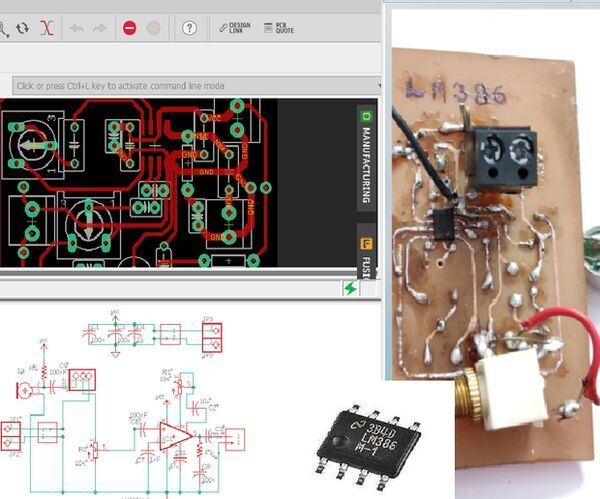
DIY LM386 Audio Amplifier : Datasheet,Circuit,PCB,Hardware
"Hi there, today we will be learning how to make an audio amplifier using SMD version of LM386. We will look at the datasheet info, the circuit diagram in EagleEDA, then the PCB in Eagle EDA and finally the actual hardware. It will be a complete DIY with circuit and PCB descriptions and information everything included.Necessary files are also given at respective steps Prerequisites: Analog Circuits, familiarization with PCB and circuit analysis, reading datasheet, . So lets not waste any more time and directly jump at the circuit info. Supplies: - LM386 SMD - 100nF(104) ceramic non polar cap, 4pc - 2pF ceramic non polar cap 1pc - 100uF polar electrolytic 1pc - 47uF polar Capacitor electrolytic 1pc - 470uF polar Capacitor electrolytic 1pc - 10uF - 10k potentiometer 2pc - 1 condenser mic - 10ohm Resistor - 1kohm resistor - 8ohm speaker and earphone - 3.5mm Male cable and female connector - 9V battery with connector - male header and shorter caps - Terminal Blocks (Number as per ur requirements) - copper clad board single sided - Hand drill with 0.7,0.8,0.9 mm bits for PCB hole drilling - FeCl3 solution for etching - Cloth iron for toner transfer - Glossy photopaper A4 for printing PCB with Laser Printer - Acetone/Kerosene for cleaning away toner - Soldering Iron and solder - Wood varnish (optional)" [...]

Tiny Whoop Drone Gate With Timer
"I got my son a tiny whoop indoor FPV drone for Christmas, specifically an EMAX Tinyhawk II. Weve had fun creating small obstacle courses in our basement, but one thing was missing a timer so we could compare flight times. This instructable (my first) is for a drone gate with an automatic timer that can be used at the start and end of the course. When the drone passes through the gate at the start of the course, a timer starts and continues until the drone passes through the gate again at the end of the course. Since were using an Arduino as the brains of this project, we decided to add an RGB LED strip in a circle that the drone flies through. The LEDs change colors every ten seconds during the race that the pilot can see in their peripheral vision." [...]

3D Print Bed Leveling Tool Using M5StickC
"Do you ever find it a hassle to manually level your 3D print bed every time you make a print? Even seasoned 3D printing pros need to level the printbed after every couple prints. Weve created a device that helps tremendously improve this procedure. This project, codenamed OmniLevel, helps you level your 3D printer bed with just a push of a button. We used the M5Stick-C to monitor the pressure between the nozzle of an extruder and the printer bed. Using a force-sensitive resistor (FSR), this allows the user to easily detect when the bed is level." [...]
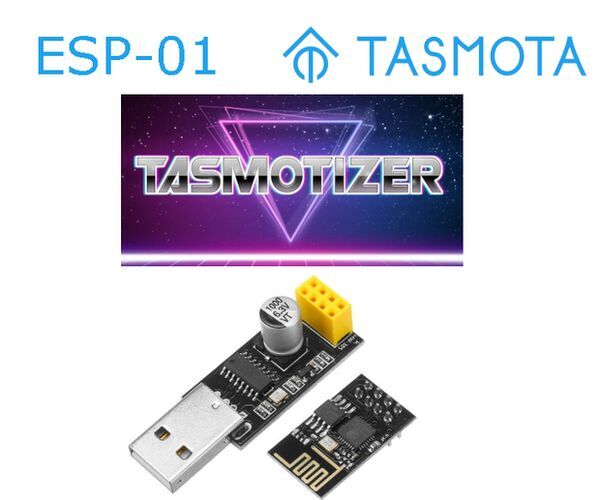
Easy ESP-01 Tasmota Programming
"A simple consolidation of information to flash the ESP-01 module with Tasmota using Tasmotizer. Supplies: You require the following for this project: ESP01 Module and programmer Male and Female jumper wires Optional push button Latest version of Tasmota Latest version of Tasmotizer" [...]
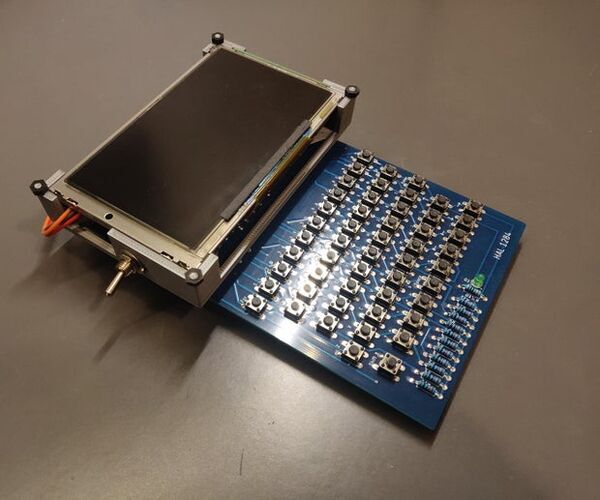
Handheld BASIC Computer
"This Instructable describes my process of building a small handheld computer running BASIC. The computer is built around the ATmega 1284P AVR chip, which also inspired the silly name for the computer (HAL 1284). This build is HEAVILY inspired by the amazing project found here and the SuperCON BASIC Badge. The computer runs a modified version of TinyBasic, although much of the software is based on the project by dan14. You can of course follow this Instructable, or even better, improve on it since I made a few mistakes. For this project, I also created a manual." [...]
That's all Folks!



